









THE MAGAZINE FOR INTERNATIONAL EDUCATORS Finding Joy without Judgement Successful self-taught study kampus24.com MAGAZINE SPRING 2023 www.schoolmanagementplus.com PART OF SCHOOL MANAGEMENT plus British and International? IN PARTNERSHIP WITH In partnership with
Speech and Language Therapy training for teachers to support children in the classroom



Our courses are especially helpful for those supporting children with Special Educational Needs (SEN)

online now www.elklan.co.uk
to Support Children’s Language and Learning Book
The













ADVERTISING









Contents 28 Successful self-taught study Vanessa Walker 32 How do we teach children about the World without scaring them? Rob Ford 36 Challenges in International Assessment Louise Badham From the Schools 38 Rethinking Learning and Learning Spaces after the Pandemic Tasneem Khan 40 British and International? In today’s changing world, it is more possible than ever for schools to be both Claire Russell From the Associations 44 New Paradigm Diversity, Equity and Inclusion Leadership Angela Browne Features 4 Finding Joy without Judgement: From Goals to Values Helen Street 8 What words would YOU use to describe 2022? Elisabeth Neiada 12 Developing effective Environmental and Sustainability Education for longterm behaviour change – the changing focus of education Lauren Binnington 16 What is a concept? A brief journey from Plato’s forms to the Overton Window Paul Regan Leading, Teaching and Learning 20 Challenges Faced By Women Who Lead. Part One: Four Themes from Interviews with Women in School Leadership Kim Cofino 24 Strategic Planning for International Schools Jacobus Steyn On the Cover How do we teach children about the World without scaring them? page 32 12 Developing e ective Environmental and Sustainability Education for long-term behaviour change – the changing focus of education 28 Successful self-taught study 32 How do we teach children about the World without scaring them? THE MAGAZINE FOR INTERNATIONAL EDUCATORS EDITORS
DIRECTOR
Mary Hayden Jeff Thompson editor@is-mag.com www.is-mag.com MANAGING
& PRINT
Steve Spriggs steve@williamclarence.com DESIGN
Fellows Media Ltd
Gallery,
Southam Lane, Cheltenham GL52 3PB 01242 259241 bryony.morris@fellowsmedia.com
part of this publication may be reproduced, copied or transmitted in any form or by any means. International School is an independent magazine. The views expressed in signed articles do not necessarily represent those of the magazine. The magazine cannot accept any responsibility for products and services advertised within it. fellowsmedia est. 1992
Jacob Holmes jacob.holmes@fellowsmedia.com 01242 259249 No
Spring 2023 International School Finding Joy without Judgement Successful self-taught study MAGAZINE schoolmanagementplus plus and International? partnership Spring 2023 | International School | 3
Part of the Independent School Management Plus Group schoolmanagementplus.com
Finding Joy without Judgement: From Goals to Values
By Helen Street
A focus on values supports the development of contextual wellbeing with meaning and purpose. Moreover, the exploration of values within a classroom, living room or board room helps us to understand and pay attention to what matters, without limiting our understanding of ourselves, or of who we can become.
In part one of this two-part series (which appeared in the last issue of International School magazine), I explored the value of focusing on ‘what works well’ in any given situation; as opposed to ‘what is not working and needs changing’. Taking this strength-based approach to guiding behaviour is both energizing and encouraging. It ensures that feedback provides an opportunity to experience competency and growth.
To ensure that this strength-based approach is both meaningful and workable, the concept of a strength (ie what works well) needs to be defined in relation to the context a person is in. For example, in the midst of a class discussion having the ‘courage’ to present your ideas on stage will often be a valuable strength; whereas in the midst of a sporting event, embracing
4 | International School | Spring 2023 Features
‘perseverance’ might lead to the best experience.
Behavioural theories of depression have long suggested that we learn behaviours that are useful to us (ie act as strengths) in the context of our childhood. If we then change context, but do not alter our behaviour, the behaviours that used to be useful can become barriers to wellbeing. For example, consider a child growing up in a household where noise and chatter are not tolerated from junior family members. The child may usefully learn to sit quietly when other people are around. If the child then grows into an extremely quiet adult, this may impede them connecting easily with others. It is thus imperative that we learn fluidity and flexibility in our attitudes and behaviours, as much as we learn about how different attitudes and behaviours can work in different situations.

I believe an authentic and thriving world needs to embrace all facets of the human condition as worthy, meaningful and of great value within the right situation. As such, any of the multitude of human attitudes, feelings and behaviours can be experienced as positive or negative given the right moment in the right context, at the right time. This is true of those ways of being and behaving that are often experienced as tough and challenging. For example, anger can be a call to improve equity; grief can be an expression of immense love; anxiety can be an important call for caution.
Certainly, some of Seligman and Peterson’s identified ‘character strengths’
(2004) have been well-researched as mediators of wellbeing in western culture. For example, kindness has often been cited as a cornerstone of positive relationships, an important element of living well (see, eg, Lim et al, 2021; Anonymous, 2010). Gratitude has been significantly linked to both wellbeing (Alkozei et al, 2017) and the reduction of unwanted states such as resentment (Hammer & Brenner, 2019). Still, no-one would state that the expression of any attitude or behaviour is always beneficial or warranted in every situation, and perhaps even more importantly, it does not always represent a person’s authentic response to a context. For example, if a person is frustrated and angry within an inequitable context, this could be a strong, healthy and understandable response. Moreover, if this frustration and anger leads to that person changing or leaving the context which is unhealthy for them, then their response has also arguably been a strength at that time.
The more we categorize personality states and traits in positive and negative terms, as ‘strengths’ or weaknesses,
the more likely we are to pathologize unpleasant emotions and to limit the full complexity of human experience. This can be troubling on multiple levels. It can lead those experiencing distress, anxiety or sadness to view themselves as lesser or estranged from their communities. At its extreme, the preference given to certain ways of behaving and feeling can lead to an assumption that dysphoric states are inherently wrong. This belief may well compound distress, leading sufferers to feel bad about feeling bad (Street, in press).
I propose that a more useful, and more accurate representation of Seligman and Peterson’s character strengths would be to state that they represent some of the attitudes and behaviours that are frequently associated with wellbeing in the twenty-first century. As such, they provide a useful reference point to explore responses in any given situation. This is a very different notion to assuming each person can usefully be assessed according to their ‘top’ character strengths, that character strengths are positive traits irrespective of context, or
Spring 2023 | International School | 5 Features
We learn behaviours that are useful to us (ie act as strengths) in the context of our childhood.
that there are a definitive 24 character strengths in the world.
Rather than asking ‘what are your top character strengths?’, I suggest it is better we ask: ‘what attitudes and behaviours are strong within this situation at this time?’ Far better to believe in the power of multiple possibilities than to be defined with limited powers.
The Guidance of Values
So, if we shift our focus on well-being and behaving from the individual to the context, how might we better support and guide an individual on their unique journey in life? Rather than consideration of a person as having a
References
certain number of ‘character strengths’ to a greater or lesser degree, I suggest we invest in understanding ‘the power of living according to our values’. Unlike the proposed assessment of ‘character strengths’, we are not defined by our values. Rather, our values are the things that we consider most important in life. They represent ways of being and behaving that we consider as valuable guides for an authentic life. They form the basis for the development of many of our beliefs about what matters in the world, and what attitudes and behaviours we choose to express. As such, the identification of our values can help us understand more about how
we operate in the world while also honouring context and the ever-changing nature of our social identity. Our values represent what matters to us within a flexible, ever-changing, multi-faceted existence. I suggest that it is incredibly useful for any social group, be it a family, a classroom or a staffroom, to spend time identifying shared values that inform normative development and our shared understandings of the world.
I formulated the idea of Contextual Wellbeing (Street, 2018) as a means of better understanding our place in the world as social beings. The Contextual Wellbeing framework proposes that we are a ‘well being’ when we experience belonging and engagement within a healthy social context. A healthy social context is a context that meets our fundamental needs for relatedness, autonomy and competency (Ryan & Deci, 2012) in an equitable way. A focus on values supports the development of contextual wellbeing with meaning and purpose. Moreover, the exploration of values within a classroom, living room or staff room helps us to understand and pay attention to what matters, without limiting our understanding of ourselves, or of who we can become.
If we can learn to accept and connect with both our ‘inner-most selves’ and our ‘outer-most contexts’ in a way that respects and responds to our values, we can learn to live well. ◆
Dr Helen Street is an education consultant, social psychologist and advocate for educational reform. She works in schools around the world supporting the equitable development of improved wellbeing, mental health and engagement in students and staff.
✉ Helen.street@uwa.edu.au
• Alkozei A, Smith R and Killgore W D S (2017) Gratitude and Subjective Wellbeing: A Proposal of Two Causal Frameworks. Journal of Happiness Studies. 19(5): 1519.
• Anonymous (2010) Kindness Can Improve Mental Wellbeing. Irish Medical Times. 44(42): 36
• Hammer J H and Brenner R E (2019) Disentangling Gratitude: A Theoretical and Psychometric Examination of the Gratitude Resentment and Appreciation Test-Revised Short (GRAT-RS). Journal of Personality Assessment. 101(1): 96.
• Lim M H et al (2021) A Randomised Controlled Trial of the Nextdoor Kind Challenge: a Study Protocol. BMC Public Health. 21(1): 1.
• Peterson C & Seligman M E P (2004) Character strengths and virtues: A handbook and classification. New York: Oxford University Press, and Washington, DC: American Psychological Association.
• Ryan R M & Deci E L (2012) Motivation, Personality, and Development Within Embedded Social Contexts: An Overview of Self-Determination Theory. In: E L Deci & R M Ryan (eds). The Oxford Handbook of Human Motivation. Oxford: Oxford University Press
• Street H (in press) Everything Changes – how to hold on when the world lets go.
• Street H (2018) Contextual Wellbeing – creating positive schools from the inside out. Perth, WA: Wise Solutions.

6 | International School | Spring 2023





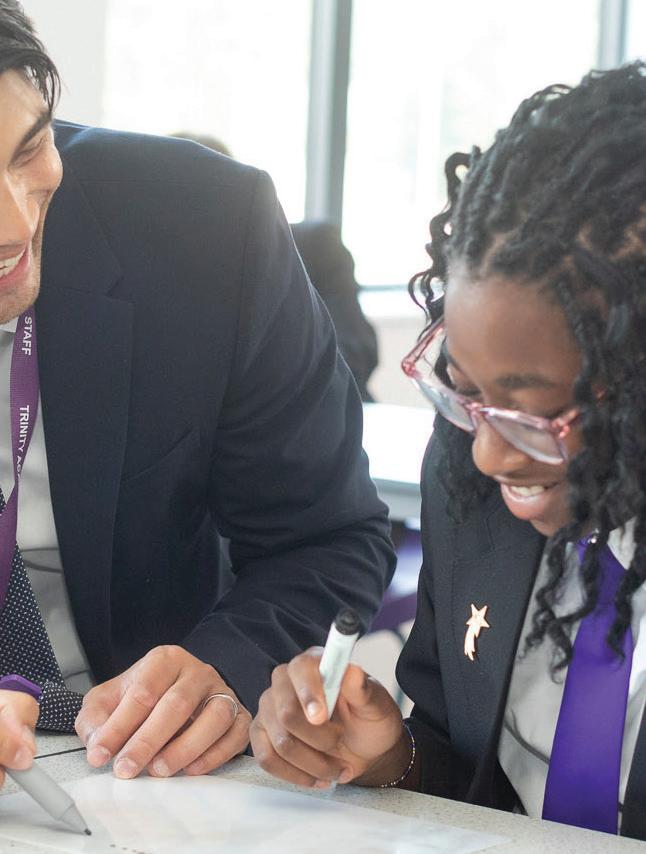











Spring 2023 | International School | 7 Features Special offer Try our complete package for only £250 Get all the resources and professional development you need to plan outstanding maths lessons for just £250. For more information scan the QR code opposite or get in touch using the details below: International schools package Scan the QR code international@whiterosemaths.com whiterosemaths.com/international-schools +441422 433 323
What words would YOU use to describe 2022?
 By Elisabeth Neiada
By Elisabeth Neiada
As I think back on 2022, I reflect on the big moments, thoughts, feelings, and even smells that came along during the year. I pause for a minute and ask myself: ‘What words would I use to describe this year?’. As both a mother of young children and a teacher, I love words: words are powerful, words are unique, words are descriptive, and words offer endless possibilities.
My first word is Growth, personally and professionally.
Professionally, I experienced growth, as in 2022 I started and completed the data collection for my PhD. It was one of the most memorable moments, and inspired me to write this article, hoping to share the initial findings of my research in Education, which addresses parental engagement in three International Baccalaureate (IB) schools in Athens, Greece. My research seeks to explore how parental engagement is understood and manifested in the IB Diploma Programme (11th and 12th grades in High School). The three IB schools that participated in my research are ‘same, same but different’, as previously noted (Neiada, 2022), with similarities and differences. All offer one or more of the IB Primary Years Programme (PYP), Middle Years Programme (MYP) and Diploma Programme
(DP), and are thus connected to the IB mission, Learner Profile and international mindedness (IB, 2020). All are private schools with high tuition fees, catering for families of higher socio-economic status (SES), and could be described as ‘elite schools’ (Valassi, 2009). Yet, each school includes Greek elements to different extents, because of their geographical location, cultural ties to the country, and being part of the wider Greek educational system.
As might be expected in such a study, my research is underpinned by theoretical assumptions and empirical observations. Theoretical assumptions suggest that parental engagement is a multi-faceted and versatile term, which comes in all shapes and sizes (Goodall, 2017; Epstein & Sheldon, 2002). For instance, it includes parents’ orientations, attitudes, practices, behaviours, and identities when involved in their child’s education (Barr & Saltmarsh, 2014). Parental engagement concerns the involvement of parents in students’ academics at school (Epstein et al, 2002), as well as in students’ extra-curricular and holistic learning outside of school, especially at home (Goodall, 2017). Moreover, successful parental engagement creates strong ties between parents and educators, leading to fruitful home-school partnerships (de Oliveira Lima & Kuusisto, 2019; Epstein & Sheldon, 2002). Consequently, parental engagement becomes a continuous, interactive, mutual process between parents
8 | International School | Spring 2023
and schools. Existing literature suggests that positive forms of parental engagement positively impact the whole school community (IB, 2020). For instance, students at such schools experience an increased quality of education and present higher levels of academic attainment (Garcia et al, 2016; Sterian & Mocanu, 2013); schools have a positive school culture, pursuing innovation, continuous learning and improvement (Connolly et al, 2019); and parents enjoy stable and nurturing home environments, with emphasis on parental confidence and skill (Lawson, 2003). Negative forms of parental engagement, on the other hand, can be a source of agony and stress for educators, parents, and students (Xanthacou et al, 2013). When parental engagement is unsuccessful, it creates a gap between parents and educators, which is problematic for students (Antonopoulou et al, 2011).

Moving on to empirical observations of parental engagement in schools, insight is shared by various researchers who have worked in schools in Greece and abroad (see, eg, Goodall, 2017; Lazaridou & Gravani Kassida, 2015; Sheridan & Kratochwill, 2008). It is argued that parental engagement is culture- and context-bound (Faircloth & Rosen, 2020; Barr & Saltmarsh, 2014), depending on different family and school factors – which may include parents’ backgrounds, upbringing and style, and a school’s type, mission, profile and size. According to Barr & Saltmarsh (2014), there is a range of ways in which schools address their relationships with parents, and in which parents choose to – or not to – engage with their child and their schooling.
Considering the above, I was intrigued to study parental engagement myself, hoping to draw conclusions in relation to what parental engagement means in theory and practice, in the context of IB schools in Greece. My data collection process involved listening to and considering the viewpoints and experiences vis-a-vis parental engagement, through interviews and focus groups, of both parents and educators of IB Diploma students. All participants voluntarily expressed interest and committed to participating in my research. I was fortunate to be able to conduct a total of forty-two interviews, the majority faceto-face, in school premises, with others completed online due to remaining Covid-19 constraints. All interviews were recorded, and then transcribed and translated (from Greek to English) by me (I am bilingual). Interviews lasted for around an hour, although their importance and vibrancy echoed with me for much longer. I am currently working on the main data analysis, but in the following paragraphs I share some of my findings that originate from an initial analysis and stand out in a first ‘scanning’ and read-through of the data.
Let me begin by discussing different forms of parental engagement, namely between parents and children, and between parents and educators. Parental engagement between parents and children can be divided into three broad categories: academics, extra-curricular activities, and social-emotional engagement. Parental engagement in academics concerns parental participation in students’ learning, assessments, grades, and university applications. A noteworthy aspect of parental engagement in students’ academics is private tutoring at home, which seems to be prevalent for students in IB schools in Greece. Private tutoring in the IBDP was described by one parent as ‘something essential that everyone does and is associated with societal stereotypes. Parents think that if they don’t do private tutoring, their child will stay behind or feel left out’. In turn, educators mentioned that private tutoring at home interferes with their teaching in the classroom, and makes their job more difficult. Parental engagement in extra-curricular activities happens mostly in practical ways, such as taking children to and from activities that contribute to the IBDP Creativity, Activity, Service (CAS) programme. Social-emotional engagement, meanwhile, relates to when parents support children’s emotional needs during their teenage years. For instance, one parent said that they are ‘present in a child’s life, sensitive to surrounding circumstances and the psychology of the child, offering them a safety net’. Engagement between parents and children happens to the extent the child wants it to, and is based on ‘trust’, ‘respect’, ‘tolerance’, ‘patience’ and ‘open communication’.
The second form of parental engagement, between parents and educators, is something participants were asked to describe in terms of the dynamics and roles that evolve between them. One educator said that ‘both parties should invest time and effort in such relationships,
Spring 2023 | International School | 9 Features
Positive forms of parental engagement positively impact the whole school community.
as they are important and necessary’. They thought that relationships with parents vary, as they are determined by people’s personalities, experiences, and way of thought – which cover a large spectrum. Nevertheless, most educators mentioned that they have ‘positive’, ‘trusting’, ‘close’ and ‘professional’ relationships with parents. In educators’ words, ‘parents are aware, grounded and well-informed about the IBDP’; ‘they are appreciative of the help and advice we give them’. Parents said that they have ‘excellent’, ‘healthy’, ‘interactive’ and ‘communicative’ relationships with educators; ‘educators are honest, close to students, know their job well and prioritize students’ needs’. Parents and educators therefore seem to agree about their complementary roles in parental engagement: ‘parents are the connecting link between teachers and child. They inform teachers about things they see at home, so that they can view the child holistically in the classroom’. In turn, ‘educators are proactive with parents: they inform them of a situation’, and ‘respect parents’ worries for their child’. Participants thought that, in such circumstances, parents and educators are a team, in collaboration and partnership. This leads to ‘independent, happy and confident children’, while ‘parents discover things about their child in a different light. They know the school better and have an ally in educators’. Also, ‘children know that their learning is supported from home and school; educators know that parents are not adversaries, [but are] supporting their effort’. When parents and educators do not form strong relationships, either because of excessive intervention or crossing boundaries, children may become stressed and insecure, with parents and educators assuming separate and distinct roles.
From the above, it is clear that parental engagement is a triangular process between parents, educators and students. In interviews, my favourite question to participants was ‘What words or images would you choose to describe parental engagement?’. Parents stated that parental engagement is: ‘connection with the child through discovery and exploration’; ‘an image: a child, in several stages of life, running, laughing, playing, etc. and the parent standing in the back, as an observer’; ‘balance, support, and continuing the educators’ effort and work’; ‘an equilateral triangle: parents, students, and educators are a triangle, and we all benefit from it’. Educators said that parental engagement is ‘necessary, a crucial pillar in the educational process and school experience of children’. ‘It should be evident, coherent and intelligible in the work of educators and school administrators’. One educator said that parental engagement ‘takes three to tango: I want the parent to be there in multiple ways, along with the teacher and student’. The same idea was echoed by other educators, who described parental engagement as: ‘love, care, support, safety and presence in your child’s life’; ‘to believe in your child as a parent and show it to them’.
Following the different forms and definitions of parental engagement, findings helped me outline elements that influence and contribute towards parental engagement. Participants suggested that parental engagement is influenced by a number of elements, the most prominent being the school, the IB Diploma Programme, and the Greek culture. By school, I mean the people in a school, as well as the school’s profile and policies on how to approach parents and parental engagement. The majority of parents expressed views such as that ‘the school really wants to engage us, invites us to participate in activities and keeps us informed’. In this endeavour, the role of the Diploma Programme Coordinator in engaging parents was highlighted in all interviews. For instance, one parent noted that ‘the IB Coordinator is extremely important, in how much he understands and believes in the IB, and engages parents. We are very pleased with him’. Parents also expressed the view that all three schools are ‘well-established, well-trusted, and well-known, so we do not need to get overly engaged’.
Finally, an idea commonly expressed by parents and educators concerned the Covid-19 pandemic’s aftermath in parental engagement. One educator said: ‘Covid-19 has been a huge barrier to parental engagement and impacted human relationships to an immense extent. Before Covid, there was passion and enthusiasm in human relationships and conversations. For
10 | International School | Spring 2023 Features
It is clear that parental engagement is a triangular process between parents, educators and students.
instance, parent-teacher conferences were an important event, while now everything happens online, and you don’t see the same directness in our relationships’.
Concerning the influence of the IBDP on parental engagement, parents and educators agreed that the IB mentality and philosophy place students at the heart of learning, ‘promoting creative thinking and personalised learning’. Small class sizes, the high level of learning and the interconnectedness of subjects may discourage parents from getting involved, as they do not easily understand the IBDP curriculum. All participants mentioned, too, a considerable difference and gap between the Greek educational system and the IBDP, in terms of curricula, assessments and grades. As a result, parents might show a lack of interest and/or over engagement in academics and school matters. Still, all parents mentioned that they were extremely satisfied with the IBDP as a programme, which they reported was also the case for their children.
Finally, the Greek culture and mentality were noted as major elements influencing parental engagement. Indicatively, participants said that the ‘Greek culture and mentality of parents comes above all else and shadows everything’. Specifically, ‘the role of family in Greece is paramount, and not necessarily in good ways; it suffocates children’. For instance, ‘Greek parents pamper and over-protect their children, and want them to succeed at all costs’. This is attributed to parental aspirations and high expectations for children to achieve good grades and enter Ivy League universities, which reflects upon parents’ engagement with educators and the school. One participant expressed the view that ‘no school or program will ever ‘dethrone’ the Greek traditional mother from her position’. I believe such an approach comes in sharp contrast to the IB mission and ideals that promote students’ autonomy, independence, and personalised learning. Thus, participants observed that the implementation of IB programmes in schools in Greece is very much culture-based.
References
• Antonopoulou K, Koutrouba K & Babalis T (2011) Parental involvement in secondary education schools: the views of parents in Greece. Educational Studies. 37(3): 333-344.
• Barr J & Saltmarsh S (2014) ‘It all comes down to the leadership’. The role of the school principal in fostering parent-school engagement. Educational Management Administration & Leadership. 42(4): 491-505.
• Connolly M, Eddy-Spicer D H, James C & Kruse S D (2019) The SAGE Handbook of School Organization. Los Angeles, Calif: SAGE.
• de Oliveira Lima C L & Kuusisto E (2019) Parental Engagement in Children’s Learning: A Holistic Approach to Teacher-Parents’ Partnerships. In: Pedagogy in Basic and Higher Education-Current Developments and Challenges. IntechOpen.
• Epstein J L & Sheldon S B (2002) Present and Accounted for: Improving Student Attendance Through Family and Community Involvement. The Journal of Educational Research (Washington, DC). 95(5): 308-318.
• Epstein J L, Sheldon S B, Sanders M G, Simon B S, Clark Salinas K, Rodriguez Jansorn N & Van Voorhis F L (2002) School, Family, and Community Partnerships: Your Handbook for Action. https://www.govinfo.gov/content/pkg/ERICED467082/pdf/ERIC-ED467082.pdf
• Faircloth C & Rosen R (2020) Childhood, parenting culture, and adult-child relations in global perspectives. Families, Relationships and Societies. 9(1): 3.
• Garcia M E, Frunzi K, Dean C B, Flores N & Miller K B (2016) Toolkit of
My second word, revisiting my article’s initial question about words to describe 2022, is Gratitude.
I feel extremely grateful to participants, for their genuine enthusiasm towards my research and willingness to talk about their experiences and thoughts on parental engagement. Their interviews and words offered me endless insights not only into parental engagement as a phenomenon, but also into the importance of familyschool relationships as discussed and practised in everyday life. My initial analysis of data has surfaced a couple of important take-aways that will inform the main data analysis: first, parents and educators alike are favourably disposed towards parental engagement. They value parental engagement, believe in its benefits, and seek for it to happen in schools. Consequently, in most cases, relationships between parents and educators are positive and productive, benefitting students and the whole school community. Second, parental engagement is based on human relationships and connections between educators, parents and students. I believe that human relationships and connections are vital, especially in environments such as schools that are human-centred. In cases where parental engagement is negative, human relationships and connections have the power to transform the engagement into something more positive. The IBDP promotes and embraces human relationships and connections through its pedagogy, as is the case for participating schools in my research. It is on this positive note that I finish this article, feeling confident that parental engagement in research and practice will continue to grow, leaving a positive imprint on international schools and the world of Education. ◆
Elisabeth Neiada is a doctoral student in Education at the University of Bath, UK. She has taught at international and IB schools in Athens, London, Paris and New York.
✉ een26@bath.ac.uk
Resources for Engaging Families and the Community as Partners in Education. Part 1: Building an Understanding of Family and Community Engagement. REL 2016-148. Regional Educational Laboratory Pacific.
• Goodall J (2017) Narrowing the achievement gap: Parental engagement with children’s learning. London: Taylor & Francis.
• IB (2020) Facts and Figures. https://www.ibo.org/about-the-ib/facts-and-figures/
• Lawson M A (2003) School-family relations in context: Parent and teacher perceptions of parent involvement. Urban Education. 38(1): 77-133.
• Lazaridou A & Gravani Kassida A (2015) Involving parents in secondary schools: principals’ perspectives in Greece. International Journal of Educational Management. 29(1): 98-114.
• Neiada E (2022) Parental engagement re-imagined: new beginnings and fresh starts. International School. Spring: 6-8
• Sheridan S M & Kratochwill T R (2008) Conjoint behavioral consultation: Promoting family-school connections and interventions. Springer Science & Business Media.
• Sterian M & Mocanu M (2013) Family-school partnerships: Information and approaches for educators. Euromentor Journal. 4(2): 166.
• Valassi D (2009) Choosing a private school in the Greek education market: a multidimensional procedure. Atelier. 6: 13-14.
• Xanthacou Y, Babalis T & Stavrou N A (2013) The role of parental involvement in classroom life in Greek Primary and Secondary education. Psychology. 4(02): 118.
Spring 2023 | International School | 11 Features
Developing effective Environmental and Sustainability Education for

 By Lauren Binnington
By Lauren Binnington
As an educator at an international school in Vietnam, a country that generates the 4th largest amount of plastic waste in Southeast Asia (annually throwing 730,000 tones into the ocean: Hai and Vu, 2019), and recognising that schools contribute up to 19% of plastic waste in Vietnamese cities (Verma et al, 2016), I have become personally invested in educating young people to develop skills for long-lasting change for our planet. Environmental and Sustainability Education (ESE) refers to teaching and learning that develops the knowledge and skills needed to deal with global environmental challenges, seeking to equip young people for a rapidly changing planetary environment. The United Nations 17 Sustainable Development Goals (SDGs), aiming to eradicate poverty, reduce inequalities, and develop sustainable environmental approaches (UN, 2015), have been a catalyst for many international schools to grow ESE provision, providing more regular opportunities for students to develop sustainable behaviours that minimise their environmental impact. Successful ESE is interdisciplinary, locally relevant, promotes lifelong learning, and ‘empowers learners of all ages with the knowledge, skills, values and attitudes to address the interconnected global challenges we are facing’ (UNESCO, nd).
So how do we build a curriculum approach that develops proenvironmental behaviours in a sustainable way? Early ESE approaches shared knowledge through communication campaigns, or taught knowledge related to global issues, aiming to alter attitudes and therefore motivate behaviour change (Hungerford and Volk, 1990). However, simply learning about climate change fails to develop the social and emotional action competencies needed for behavioural change, and focuses more on what young people will do in the future than



long-term behaviour change – the changing focus of education
on what impact they can have now. Environmental Psychology, which explores humanity’s relationship with the environment, can help schools to develop effective ESE, by considering how knowledge and attitudes become behaviour. Theories suggest that sustainable pro-environmental behaviour is influenced by motivating variables such as environmental sensitivity or having empathy towards the environment (Hungerford and Volk, 1990) which can be developed from taking direct environmental action and having experiences in the outdoors. Traditionally, ESE provides more indirect experiences through videos or case studies that have limited impact; learning about climate change, and living with a flooded street experiencing the result of climate change, generates different emotions. Research shows that experience in natural areas, especially in childhood, creates a commitment to engage in pro-environmental behaviour (Chawla, 1999). A recommendation for ESE is therefore to provide informal outdoor experiences or more formalised planned action, such as taking care of a local area, to develop environmental sensitivity or environmental consciousness in young people (Chawla, 1999).

Another important motivator involves taking ‘ownership’ of environmental issues, gained through having in-depth knowledge regarding the issue, its implications, and action strategies, and having self-efficacy and belief in one’s ability to enact a change (Hungerford and Volk, 1990). This is also influenced by values, attitudes and emotions, personality, culture, and the social norms of family and peers (Kollmuss and Agyeman, 2002). Therefore, for effective ESE we need to develop a culture of sustainability, making pro-environmental behaviour the norm; this involves the entire school community.
ESE also needs to break down barriers to action, such as existing patterns of behaviour (Kollmuss and Agyeman, 2002). An individual’s motives, even with environmental knowledge, can be contradictory. For example, while
wanting to have an environmentally friendly lifestyle we may also focus on our immediate comfort when we choose to drive rather than cycle in the rain (Kollmuss and Agyeman, 2002). These internal barriers to action can be partly overcome through emotional involvement and learning to respond empathetically to environmental issues. This depends upon our locus of control; when we feel we can act, then we can cope with strong emotional reactions (Kollmuss and Agyeman, 2002). In dissertation research for my Masters in Education, graduates from my school expressed a willingness to take action that came from the knowledge and experiences they gained while at school, but also an inability to act due to feeling that actions were too inconvenient or wouldn’t make a difference to the wider global problem.
Spring 2023 | International School | 13 Features
For effective ESE we need to develop a culture of sustainability, making proenvironmental behaviour the norm.
ESE could develop skills to reduce these barriers by enabling students to create their own projects and increase their self-efficacy; schools can provide experiences for students to take meaningful action and increase competence. In this approach, ESE requires student involvement in decisionmaking and outcomes themselves. For example, rather than simply making students use recycling bins (a passive action), instead they could be tasked with generating, trialling, and implementing recycling strategies themselves, thus engaging in direct problem-solving with immediate impact. Effective ESE focuses on the skills young people need to consider their actions and make behavioural decisions. If we want to develop self-efficacy, then we need to increase these experiences in our schools. Further ways to develop self-effi cacy can be through growing student-led projects, involving students as action researchers, leaders of campaigns, activists, researchers, and educators. Young people instigating action themselves has greater meaning; taking classroom-based learning into their community through project-work, such as designing a sustainable refi ll service
for a local business, gives responsibility for empowering and developing the capacity for change in others to young people, enabling them to practise their skills. Educators can work with parents, community members and local organisations to increase the impact that young people can have within the community and as role models.

What has become clear from my own research is that simply learning about sustainability through ESE is not enough; young people need to have experiences and opportunities for action. ESE can
References
provide knowledge of environmental issues and opportunities to engage in active projects, develop leadership skills, and make connections with like-minded others. Schools need to take risks and allow young people to initiate and work through change actions in the present, gaining immediate experiences beyond the classroom that impact within the community. By empowering young people, encouraging action, developing project work, and engaging in refl ection, they will begin to act in creative ways and have an immediate and longer-term impact on the world. ◆
✉
• Chawla L (1999) Life Paths into Effective Environmental Action. The Journal of Environmental Education. 31(1): 15-26.
• Hai T T & Vu N (2019) The Crisis of Plastic Waste in Vietnam is Real. European Journal of Engineering Research and Science. 4(9): 107-111.
• Hungerford H R & Volk T L (1990) Changing learner behavior through environmental education. Journal of Environmental Education. 21(3): 8–21.
• Kollmuss A & Agyeman J (2002) Mind the Gap: why do people act environmentally and what are the barriers to pro-environmental behaviour? Environmental Education Research. 8(3): 239-260
• United Nations (2015) Transforming Our World: The 2030 Agenda for Sustainable Development. Resolution 70/1 adopted by the General Assembly on 25 September 2015. Available from: http://www. un.org/en/ga/70/resolutions.Shtml [Accessed 18 April 2019].
• UNESCO (nd) Global Action Plan for Education for Sustainable Development (2015-2019). Available from: https://en.unesco.org/globalactionprogrammeoneducation [Accessed 23 December 2021].
• Verma R L, Borongan G & Memon M (2016) Municipal Solid Waste Management in Ho Chi Minh City, Viet Nam, Current Practices and Future Recommendation. Procedia Environmental Sciences 35: 127-139.
14 | International School | Spring 2023
Lauren Binnington is Deputy Headteacher at the British International School, Ho Chi Minh City, Vietnam.
lauren.binnington@googlemail.com
An individual’s motives, even with environmental knowledge, can be contradictory.
Meet students where they are with digital titles














The Sora student reading app offers an extensive catalog that spans the interests and reading levels of every student, and includes titles in over 100 languages. With ebooks for visual learners, audiobooks for auditory learning and diverse subject matter, Sora helps makes sure every child feels included and empowered.


Learn more at company.overdrive.com/international-schools
What is a concept? A brief journey from Plato’s forms to the Overton Window
By Paul Regan
It is empirically obvious that an ability to make sense of reality must have conferred an evolutionary advantage on our ancestors. From a very early age, experience tells us that as soon as we become confused or mistaken, we become vulnerable to manipulation and attack. But, it is less obvious how our species has evolved to encode and decode meanings and patterns in our environment in order to construct the most successful models that can both protect us, and also, as a by-product, guarantee power and knowledge. For example, in times of crisis and danger it may have been too time-consuming to seek unvarnished truth, so instead, successive generations developed the ability to make heuristic, conceptual models which repeated experience revealed to be useful and life-saving. Adults then found new ways to pass them on to their offspring via innovations such as language and play. If you could escape the predatory lion by knowing first how to avoid him and then later how to hunt him, you might survive long enough to reproduce and pass on your genes. For Humanity, the survival of the fittest owes a great deal to an inherited ability to understand and exploit ecosystems by using and communicating concepts.
Fast forward to today and, give or take the occasional refit, we are still relying on those same mental models
not only to survive as before but also, inter alia, to socialise, make ethical choices, and navigate complexity. Failure to do so can condemn an individual to make poor choices, repeat failures rather than learn by them, and lose touch with reality. Little wonder then that conceptual learning is part of the toolkit which educators are being advised or told to understand and to include in their teaching. Quite rightly, conceptual learning has made a comeback.
But what exactly is a concept and how can it benefit the learner?
Firstly, although concepts are basically a description of events, facts or aspects of reality, not all concepts are born equal. What they all do share, however, is their abstract quality. You cannot see or touch them; nevertheless, you can think about them, use them, and pass them on. They are descriptive, even reflective, inasmuch as they either transcend a body of facts or events or neatly synthesise or summarise them, placing them in classes or categories, the better to understand them. And they are interpretative, designed to represent a state of affairs by appealing to certain cognitive faculties such as reason, intuition and imagination. A good example of a concept is causation. As the enlightenment philosopher David Hume observed, you cannot see or touch a cause or en effect, but you can infer both of them due to a reasonable confidence in the uniformity of nature (another concept). It is also descriptive in that it neatly

16 | International School | Spring 2023
But what exactly is a concept and how can it benefit the learner?
simplifies, packages and categorises a universal phenomenon, and it helps us to recognise it wherever it occurs.
But concepts, unlike theories, are not or need not be evidence-based. A ‘dragon’ is a concept even though it is a fictional creature, whilst Humanity is a concept based upon observation of individual men and women. Plato’s seminal idea of ‘Forms’ – ideal, eternal and unique qualities of which our reality is but a partial representation – is profoundly metaphysical. It is also a theory of knowledge since it claims that knowledge of the Forms, impossible for most of us, is the only true knowledge, whilst everything else is mere opinion. For the German eighteenth century philosopher Emmanuel Kant, a concept is a mental representation which refers to one of twelve categories such as quality, quantity, relation, and possibility. In their turn, these categories act like a pair of spectacles which we wear in order to interpret and even to construct reality.
The International Baccalaureate (IB) Primary Years Programme (PYP) assessment programme makes explicit its commitment to conceptual learning and even has its own set of eight concepts, which it requires teachers to weave into their disciplines via their scope and sequence curriculum planning documents. IB teachers are expected to implant in the minds of their students not Kant’s categories exactly, but the seeds of a conceptual framework which in theory is designed to promote a holistic understanding of the connectivity of facts, events, ideas and beliefs. They even sound similar with titles such as function, form, causation, change and connection.
But concepts are not or should not be normative; they are descriptions or explanations of how things are, not how they should be. As they are not necessarily evidence-based, they can be differentiated from theories that are or should be based upon experiment and observation. Although the various terms known as concepts, categories and theories are often used interchangeably, they are quite different. Concepts are philosophical rather than scientific, and illustrative rather than definitive. This does not mean of course that they are false or misleading, just that they are ideas rather than verifiable facts. An ability to spot any attempt to win an argument by using concepts normatively, to move as it were from an ‘is’ to an ‘ought’, is one of the pillars of critical thinking. To fail to know when you are doing so is to commit the naturalistic fallacy, something most of us do several times a day by the way.
Which brings me finally to the concept of the Overton Window, and why I believe it to be an important tool for educators. Named after the political scientist who first coined it, Joseph Overton, it describes how at any one time in any one political entity (nation state, empire, city state and so on), there is a body of ideas, beliefs and ‘truths’ which are permissible. And conversely there are others that are not permissible by virtue of being too radical, or culturally unacceptable. Let’s call it the Zeitgeist. Politicians should be wary of upsetting the equilibrium of the window, but they frequently do so
anyway – often to their own cost or to the detriment of society.
Why have I chosen the Overton Window? For educators, it is a perfect example of a class of concepts which attempt to describe certain human phenomena or ways of behaving that we routinely observe but cannot quite explain or define. There are many others in this class, such as Occam’s Razor, and The Invisible Hand, which not only speak to aspects of our reality but can also be a guide to thinking about the world in a more ordered way. The first sets out a method for thinking by eliminating extraneous information, and the second explains the movement and effects of market forces.
The Overton Window shifts over time, but why and how does it shift and who makes the shift? The empowered citizen has a role to play within the window, but is not given advice about what he or she should want to take out or to bring in. That would be normative, which is forbidden. Thus over time does slavery and discrimination disappear whilst female emancipation and universal human rights make an appearance. But totalitarianism, war, and inequality can also return to the window since there is no assumption about inevitable moral progress. The Overton Window also explains why the recent attempt in Scotland to introduce radical legislation concerning change of gender without a proper medical licence was so emphatically rejected by the population. On the other hand recent pandemicrelated lockdowns and other non-medical interventions, although radical, were broadly accepted – albeit for only a relatively short time.
The Overton Window stands on its own as a way of thinking about the marketplace of ideas and policies which can be a rational guide for active and informed citizenship. Conceptual learning is all very well, but it can only be of value when the student both understands the meaning of concepts and can grade them according to their type and usefulness. I have used the Overton Window to illustrate my point for three reasons. Firstly, it explains why some policies work and others don’t. Secondly, it demonstrates how a well thought-out concept of its type can be a tool for learning. And thirdly, in our current time of iconoclasm, when we are busy debunking many of the most treasured notions of our histories and cultures, it will help students to at least make some sense of it all. ◆
Spring 2023 | International School | 17 Features
Paul Regan has been headteacher of four international schools and is now an educational consultant for an Indian educational group. ✉ paul_regan5@hotmail.com
But concepts, unlike theories, are not or need not be evidence-based.
Mindfulness practice in the school environment: a solution to students’ and teachers’ state of wellbeing
What are the stressors teachers and students face? ’
The academic world is ever changing, both for teachers and students. The role of a teacher requires continuous flexibility with an ever-evolving desire to motivate students in their educational journey. It requires adaptation to new and increasing expectations and variations, technology shifts and pastoral care elements. Students are not exempt from pressures and stressors either: firstly, an array of internal factors influence their wellbeing such as energy levels, family pressures, social complexities and identity development. These, along with increasing pressure to achieve, frequency of examinations and assessment, and their own academic ability, all contribute to high stress levels students experience on school grounds.
What is Wellbeing?
Wellbeing is made up of two factors: how a person feels, and how a person functions. Often this is a bi-directional relationship where either factor can influence the other. For example, when we feel good we tend to function well; when we feel overwhelmed/stressed
References
our performance can suffer; when our motivation reduces we can feel distressed; when our behaviours result in positive outcomes we feel proud/energised. Our wellbeing can also be directly impacted by personal, social and societal factors with positive or negative effects - including familial demands, academic or career stress, financial worries, or other mental health and physiological needs being met or unmet.
What happens when wellbeing is negatively impacted?
When looking at wellbeing from both teacher and student perspectives, similar trends both in behaviour and cognition can be observed. Clearly, with an absence of beneficial skills comes reductions in other areas of functioning related to wellbeing. Teachers and students can experience:
• Difficulty with emotion regulation, including irritability, depression, and anxiety
• Decline in concentration, information retention and self-efficacy
• Feelings of burnout or being overwhelmed, including frustration,
Armstrong, T. (2019). Mindfulness in the Classroom: Strategies for Promoting Concentration, Compassion, and Calm. ASCD.
Chittaro, L., & Sioni, R. (2014). Evaluating mobile apps for breathing training. The effectiveness of visualization. Computers in Human Behaviour, 40, 56-63.
Crowe, A. (2021). The Importance of Self Care for Teachers & 20 Ways to Help. Prodigy. https://www. prodigygame.com/main-en/blog/teacher-self-care/
Kabat-Zinn, J. (2003). Mindfulness-Based Interventions in Context: Past, Present, and Future. Clinical Psychology: Science and Practice, 10, 144-156.
Moyano, N., Perez-Yus, M.C., Herrera-Mercadal, P. et al. (2021). Burned or engaged teachers? The role of mindfulness, self-efficacy, teacher and students’ relationships, and the mediating role of intrapersonal and interpersonal mindfulness. Curr Psychol. https://doi.org/10.1007/s12144-021-02433-9
Roberts-Wolfe, D., Sacchet, M. D., Hastings, E., Roth, H., & Britton, W. (2012). Mindfulness Training alters emotional memory recall compared to active controls: support for an Emotional information processing model of mindfulness. Frontiers in Human Neuroscience, 6(15), 1-13.

Sanger, K. L., & Dorjee, D. (2015). Mindfulness Training for Adolescents: A Neurodevelopmental perspective on investigating modifications in attention and emotion regulation using event-related brain potentials.
Cognitive Affect Behavioural Neuroscience, 15, 696-711.
Savill-Smith, C,. & Scanlan, D. (2022). Teacher Wellbeing Index 2022. https://www.educationsupport.org.uk/ media/zoga2r13/teacher-wellbeing-index-2022.pdf
Zalaznick, M. (2017). Mindfulness exercises for children: Relaxation techniques calm K12 students and staff, leading to better grades and better behavior. Retrieved from https://www.districtadministration.com/ article/mindfulness-makes-difference-school
exhaustion and decreased memory
• Negative impacts on physical health, including headaches, eating, tension, sleeping
• Maladaptive coping strategies, such as substance abuse
• Feelings of decreased motivation and engagement
• Teachers may experience potential apathy for the role
• The student-teacher relationship may be negatively affected.
With this awareness of negative outcomes, what strategy can be utilised within the classroom to support both students and teachers in their wellbeing journey? The answer is Mindfulness Practice.
What is Mindfulness?
Mindfulness is the ability to intentionally focus on the present moment, allowing internal and external events or distress to pass without judgement and can be practised through multiple skills and activities. Part of mindfulness practice is increasing one’s own levels of consciousness both on a physical and psychological level. Consciousness is a crucial element of mindfulness as it increases skills of awareness and attention, which is beneficial for individual wellbeing.
What does Mindfulness consist of? Mindfulness is made up of three core components: attention, attitude and intention.
1. Attention is the ability to prioritise the information an individual receives, either from external situations or internal cognitions, and using mindfulness skills to remain attending to the present: meaning that as the mind wanders to distressing or uncomfortable thoughts, the individual uses mindfulness tools to recall their focus and calm their mind once again.
2. Attitude highlights the importance of the individuals’ approach to mindfulness. It has a direct impact on the outcome effectiveness; curiosity and openness are crucial for allowing non-judgmental thoughts and practice.
3. Intention is the goal, plan or steps to succeed in mindfulness practice. Intention is the motivation to carry out the practice or task, and is the catalyst to commence the mindfulness activity, and consistently practise long-term.
18 | International School | Spring 2023 Features 4 | International School | Spring 2023 Advertorial Feature
Benefits of mindfulness for students and teachers
There are a number of benefits that have been observed in both adults and youth when utilising mindfulness practices.
Individually, mindfulness can aid in focussing the mind, improving cognitive processing, engagement and, overall, academic performance. Alongside this, attention during class and learning can improve which supports motivation to learn. As mindfulness has shown to improve emotion regulation and provide advantageous skills, students may find they possess more effective tools and responses in anxiety-provoking situations such as exams, presentations and social situations. Additionally, with improved emotion regulation skills from acceptance and non-judgment, students may experience increased self-compassion and compassion towards others.

Within the classroom environment, mindfulness can be used to positively transition through different areas of the day, such as from the rush of arriving and settling into the day, or in between different classes. For students with multiple responsibilities and expectations, mindfulness can support the mental weight each factor requires of the student, allowing them to deliberately take time to breathe, pause, and recalibrate. Students are also able to accept their present situation and sensations, and feel a sense of control over what they can, and accept the factors they can’t. When experiencing distressing emotions such as anger or frustration, students can regulate their emotions faster, allowing for effective problem-solving. For both teachers and students mindfulness has been shown to have significant impacts on wellbeing both on a cognitive and emotional level as it helps to relieve stress, increase self-regulation and self-efficacy, improve memory and engagement, and aid in social and emotional development.
Strategies in the classroom
When beginning the classroom mindfulness journey, it may feel overwhelming for teachers to integrate another focus or dedicate time to another activity, during an already busy day. But with mindfulness, the practice can be as short as 5 minutes, which can include breathing, movement (such as yoga or mindful walking) or writing. When implementing these effectively, the benefits


from mindfulness can reduce time spent supporting students and result in more time dedicated to teaching overall. Firstly, make mindfulness practice more attractive to students by identifying celebrities of interest who utilise mindfulness. This can be a good way to get students engaged with the activities. For example, Lebron James practises on the bench during basketball games, Emma Watson is a proud Headspace advocate, and Lady Gaga utilises mindful meditation.
Schedule consistent practice with “5 Mindful Minutes”. At the beginning of the day, the entire class and teacher focus on sitting comfortably with a relaxed body, practising a breathing exercise: focussing on the breath, the feeling of the chest rising and falling, and completing a body scan to notice different tensions. Whilst doing this, practise the present moment thinking and self-compassion; when the mind wanders, accept and bring the mind back to the present. It can help to set a hidden timer, to remove temptation to count down the minutes.
Make mindfulness part of the daily activities and spaces. Calm breathing can be inserted into multiple areas of the day, such as at the start of each class, before lunch or after breaktime to allow for regulation. Identify areas in the classroom that can be relaxing and mindful spaces for students to use, for students to regulate, refocus, re-energise and rejoin the class. Don’t be afraid to use mindfulness in the moment, when noticing the overall classroom feeling.
Have fun with mindfulness by creating sensory activities for yourself and students. Have students pass round
different sensory objects, whilst remaining quiet and focussed, breathing slowly and noticing how the items feel in their hand. This can also be done with mindful eating, where foods can be used to bring attention to the senses and the present moment. Spend time mindfully listening to calm music, practising acceptance and bringing the self back when the mind wanders.
Build in time for the class to mindfully journal. This allows individuals to practise self reflection, track their experiences, identify and monitor their emotions, and practise present moment openness. Conduct a body scan and write down the sensations in the body at present as part of the journal.
Utilise resources and apps created to support the distribution and practice of mindfulness, including the Calm app and Headspace.
With all this in mind, mindfulness can support both teachers and students to feel increased motivation, value in themselves and others, energised by their abilities and efforts and effective in their work, all whilst regulating their emotions, feeling a sense of control and nonjudgment, and capable to get through the school day. ◆
Spring 2023 | International School | 19 Features Spring 2023 | International School | 5 Advertorial Feature
Abby Dale-Bates is one of Komodo’s Registered Child & Family Psychologists. She has experience working with children, adolescents and families focussing on mental health, social health and behaviour support within primary health, community and residential settings. At Komodo, she supports schools in their data-driven wellbeing journey and can be seen presenting at numerous conferences across the globe on student and staff wellbeing.
Challenges Faced By Women Who Lead
Part One: Four Themes from Interviews with Women in School Leadership
By Kim Cofino
In the Spring of 2020, I interviewed over 70 successful female leaders (in international schools, and some public and private schools around the world) for the Women Who Lead program, in order to seek their personal stories and insights on the challenges and realities facing women in leadership in education. Those interviews highlighted many of the unique challenges that women face pursuing a leadership role in schools –and their stories can help aspiring leaders recognize that the path to leadership may share some common experiences and barriers for those who do not fit the stereotypical view of ‘a leader’.
Although we may have the perception that there are more women moving into leadership roles in recent years, the data shows that is not the case. During the Women Who Lead interviews, I spoke to Deb Welsh, then CEO of the Academy of International School Heads, who noted that the percentage of women in Head of School positions has remained steady at 28-33% over the last ten years (during both her and Bambi Betts’ tenure as CEO of AISH).
While we may see more women than before in lower leadership positions, the results of the 2019 Diversity Collaborative Survey From Resistance to Sustainability and Leadership. Cultivating
20 | International School | Spring 2023 Leading, teaching and learning
Diverse Leaders in International Schools
state that ‘the pipeline is a trickle by the time you get to the upper end’ (Shaklee, 2019). The reality is that this is an ongoing problem in international, public and private schools around the world. Regarding international schools specifically, according to the same survey, ‘Whatever their definition, international schools are more likely to be focused on students demonstrating these attributes than on faculty/leadership reflecting and modeling these attributes.’ (Shaklee, 2019)
In the interviews I conducted, several key themes emerged as unique challenges for women pursuing a leadership role. Many readers will find these stories familiar. For those who are hearing these types of stories for the first time, you may want to seek out opportunities to dig deeper into why that might be. In this first article I’ll be highlighting some specific stories regarding the following four of our main identified areas of challenges faced by women in educational leadership:
• unconscious bias and daily microaggressions;
• physical expectations;
• linguistic expectations; and
• cultural expectations of ‘leaders’. All the following direct quotes are excerpts from the Women Who Lead Interview Series (Cofino, 2020).
Unconscious Bias and Daily Microaggressions
While many people might find themselves facing the problem of dealing with microaggressions in the work environment, women in leadership, and even more so women of color, often encounter particularly elevated levels of these negative interactions, since in their positions they so visibly combine the lightning-rod issues of gender and power dynamics. Junlah Madalinski, ES & MS Principal at Shutz American School, Alexandria, Egypt, described this clearly in our conversation: ‘What happens when women of color are in leadership positions is it makes them more visible. Instead of having yourself within your classroom, you have … a larger audience and microaggressions tend to play themselves out in that way.’
Women, and women of color in particular, no longer have the safety of ‘staying in their classroom’ once they take on the mantle of leadership. Being in the more public eye of a leadership position leaves them more exposed to these daily

attacks, unless there is action taken to improve the school culture. In fact, these kinds of microaggressions can begin even in the interview process. For example, Katie Wellbook, Assistant Principal for Academics at Suzhou Singapore International School, China, has heard comments like: ‘Your earrings are too big, they’re a distraction. Is that a power suit you’re wearing? Is it possible to be too ambitious?’ As she says, ‘women have to determine if these comments are misogynistic. Would they ask this to a man?’
While these kinds of comments might be an initial warning sign to determine if the recruiting organization is the right fit for the individual, we need to shift the culture to be unaccepting of this kind of language and commentary in any setting.
Physical Expectations
Many women also spoke about realizing that their actual appearance or stature had been an unspoken obstacle to securing a leadership position. When you combine physical size with heritage,
linguistic background, and other qualities subject to bias, a unique set of intersectional challenges is created. As Madeleine Heide, then Head of School at Lincoln American School, Buenos Aires, Argentina, highlighted in her interview: ‘I don’t have the profile of being a leader: I’m a woman, I come from Early Childhood, I’m not a white woman, I’m biracial, my heritage is Philipino and I claim my Philipino-ness. These are all “points against me” in terms of stepping up to the top leadership position. In my experience, people have stereotyped notions about what leadership looks like.’
Jasmeen Philleen, Assistant Principal at International School Manila, talked about the weight of responsibility she feels of not only representing herself as a Black woman, but also representing a long line of African American people. She is forced to carefully try to navigate the world knowing that when she’s new to a school, parents can be initially reluctant to have her as their child’s teacher – simply because of the color of her skin. While these stereotypes exist at all levels of education, it’s definitely still the exception to see many faces like Jasmeen’s in leadership positions in international schools. As a leader, she realizes that she’s unique, and this, as she mentioned, ‘makes me strive even harder to prove myself, to prove that I am worthy.’ Similarly, Tambi Tyler, Head of School at the Colorado Springs School, highlighted that she had ‘3 strikes [against her] coming out of the gate: as a leader, I’m young, I’m black, I’m a woman.’
Spring 2023 | International School | 21 Leading, teaching and learning
People have stereotyped notions about what leadership looks like.
Linguistic Expectations
Elsa Donohue, Head of School at Vientiane International School in Laos, realized early on that not only her gender, but her speaking accent got in the way of her being offered Head of School positions. During her Women Who Lead interview she points out that for ‘schools that were defined as being American schools, I didn’t potentially fit. Though that was never explained to me, I could figure it out.’ Elsa discovered that an unspoken requirement of speaking English with a stereotypically ‘Anglo’ accent was one of a number of factors that, particularly for women, might impede their progress or even tip the balance one way or the other during hiring.
Marta Medved, Head of School at Western Academy of Beijing, China, also feels that she’s categorized as ‘different’, not in terms of appearance, but of language background. She described experiencing this inequality in attending professional learning, ‘when you are surrounded by a group of 20 native speakers, and you’re the only second language speaker,’ noting that in these situations it might take longer to process in a second language.
Cultural Expectations
In fact, regardless of physical or linguistic conformity to expectations, women leaders with cultural, religious, or national backgrounds that differ from the standard face unique challenges as well. As Abeer Shinnawi pointed out, ‘for me as a hijabi, there’s an extra layer. There are always preconceived notions about what I will be like. I know automatically that they don’t get what they thought they were going to get when they see me.’ Being the only young Muslim woman in her school community, she always felt like she had to prove herself, and even among peers and colleagues, she always had to push against the perception of being a meek ‘wilting flower’ because of her hijab.
Many interviewees discussed similar stories of being treated differently
References
because of their background. Fighting against these stereotypes, particularly ones involving visible signs of cultural and/or religious affiliation, can seem like a never-ending battle. These serious issues are only the first of many which the Women Who Lead interviews have identified. An upcoming second article will discuss some of the remaining areas for concern, including
• perception (or reality) of lack of opportunities for women;
• exclusive networking practices among ‘traditional leaders’;
• impostor syndrome and double standards; and
• availability of mentorship and guidance. While it can be daunting to face the sheer number of obstacles confronting women leaders in education, sharing such stories and experiences might hopefully be a first step towards facing these formidable challenges. ◆
 Kim Cofino
Kim Cofino
is
Founder and CEO of Eduro Learning: https://edurolearning.com
✉ kim@edurolearning.com
• Cofino K (2020) Women Who Lead Interviews. [Video Course]. edurolearning.com/women
• Shaklee B D, Daly K, Duffy L and Specker Watts D (2019) From Resistance to Sustainability and Leadership, Cultivating Diverse Leaders in International Schools. Results of the 2019 Diversity Collaborative Survey (DCS). Retrieved from: www.iss.edu/wp-content/uploads/DC_Report_Survey2019Results.pdf
22 | International School | Spring 2023 Leading, teaching and learning
Women leaders with cultural, religious, or national backgrounds that differ from the standard face unique challenges as well.











































Spring 2023 | International School | 23 Leading, teaching and learning Personalised Digital Prospectus Open Events Event Follow Up Staff Recruitment Agent tool Make your school personal Personalised school admissions and recruitment “This is the future of school admissions.” UK boarding school Register to watch a demo kampus24.com
Strategic Planning for International Schools
 By Jacobus Steyn
By Jacobus Steyn
The strategic plan has been the cornerstone of school development and improvement for a long time. If researched and written well, strategic plans provide a clear roadmap for international school heads and boards to navigate their school to the next development phase. However, strategic plans can also quickly descend into a ‘tickbox’ exercise and become irrelevant if not reviewed against the fast-changing international school landscape.
The isomorphic nature of international schools includes the familiar 3-year or 5-year strategic plan. A head of school joining a new school could expect either to find a strategic plan left by their predecessor or to be expected to develop such a plan: very familiar territory to assist with the smooth transition of leadership. The traditional strategic plan may include the following categories (and a very handy tick-box!):
However, in 2004 Mike Schmoker lamented the use of strategic planning for schools, explaining the rise and fall of the traditional strategic plan. He argues that the sheer scope and size of these plans and very handy ‘boxes’ for tick completion results in a plan with too many activities to monitor, initiate, and implement. There is no mention of ingraining the ‘new’ into the organisational culture. Schmoker commented on using strategic plans within a USA public school context. We know that international schools are very different types of institution; is there still a place in setting the vision for international schools with a traditional strategic plan? It depends. We know that although there are significant similarities between international schools, each school is on its own path in terms of growth and improvement. Different types of plan may be either more or less appropriate, depending on where the school is on its journey.
24 | International School | Spring 2023 Leading, teaching and learning
Goal Objective Action Steps Person Responsible Resources Needed Evaluation Timeline
3-year/5-year Strategic Plan
While the 3/5-year strategic plan may not be best suited for the vast network of a public school system, it certainly has a very clear benefit for international schools as a planning tool. Schools undertaking external accreditation for the first time will certainly benefit greatly from designing their strategic focus areas and school development plans from a 3/5-year strategic plan if this plan is built around the accreditation cycle and matched against the accreditation framework.
However, one pitfall to avoid is matching the plan against the immediate framework for the phase of the accreditation cycle. If we assume a Council of International Schools (CIS) Accreditation Framework, which has four focus areas or drivers (Purpose and Direction, Learning and Teaching, Global Citizenship, and Student Well-being), there are various ‘steps’ for each domain and driver. While ‘foundation’, ‘preparatory evaluation’, and ‘team evaluation’ may all have the same domains and drivers, the success criteria in each step show a clear improvement pathway. The 3/5-year strategic plan can be appropriately utilised to drive school improvement and development to ensure a successful accreditation visit.
Depending on the school’s starting point, one 5-year strategic plan to coincide with the accreditation cycle may be appropriate. Or two 3-year plans may be more suitable if organisational and institutional practices need to be shifted to meet the membership stage. [The membership stage section of the CIS Framework details the minimum requirements to be accepted as a CIS member school. The criteria become more intensive with the phases leading to accreditation.] As strategic plans tend to be linear in nature, it is crucial to build in a review of the plan should the school opt for this route for strategic planning purposes.
Iterative and Rolling Plans

In response to the linear nature of traditional 3/5year strategic plans, in the 1990s iterative plans were discussed as a means of establishing clear goals and resources over time, while promoting flexibility via an ongoing process to navigate the unexpected and capitalise on unforeseen opportunities (Chance, 2010). In 1991, the idea emerged of a rolling wave approach to planning (Knutson and Bitz, 1991). The philosophy underpinning this approach is that the path or journey may change, and planning should be adaptable to this. The analogy of a mountain climbing expedition is used. Thorough research and lessons learned from previous expeditions can secure a solid starting point, with clear approximations (not estimations) of the time and resources required to reach stage 1. As the journey unfolds, the expedition is ready to plan for stage 2. Once stage 2 is reached, enough information is available to plan for stage 3. Stages can be days or months, depending on the situation. (American Management Association, 1997).

Iterative and rolling plans seem very similar in nature. I think the key difference is where the school is on its journey. If a school is already established but would like to move in a certain direction, for example to become a trendsetter for Project Based Learning and Skills Based Assessments, but they are not there yet, then an iterative approach would be most appropriate. This type of strategic planning will allow for strategic goals to be set (establish best practices for Project Based Learning; Develop Skills Based Assessment protocols) and then a route card to be created to reach this goal. As a reflective practice is strategically employed along the journey, changes can be made to ensure the goal is reached to the required standard, incorporating new research or technologies while avoiding pitfalls.
Rolling plans become very interesting for well-established schools that focus on innovation and seek to remain relevant, building on their primary task. It is not surprising that rolling plans were discussed in Forbes’ Magazine Leadership Strategy section (Bradt, 2019). In fastchanging business environments, including international education, taking stock of progress and the relevance of goals every three or six months is ideal. One day per stock-take, as opposed to one week a year with traditional plans, not only saves time but also ensures an accurate representation of reality (the market) in planning.
For example, this planning
Spring 2023 | International School | 25 Leading, teaching and learning
A recent short survey from the Academy of International School Heads (2022) shows a very interesting picture of types of plan found in a number of international schools.
Courtesy of Antonio Patarozzi, Twitter (2013)
method can be handy for schools that identify as technology trendsetters. The emergence of META Quest could potentially have fascinating advantages for education.
Covid-19 taught all of us that the education dynamic could change overnight.
Rolling plans are ideal for schools that have ambitious goals, which can be measured against changing criteria depending on the success achieved. A rolling plan ensures that the school can remain a technological trendsetter, as the goalposts continually shift as new innovations and uses emerge.
A rolling plan could take the form of a working document, with ‘stage meetings’ which are appropriate to the school and its unique setting and journey. This plan calls for clear and measurable ambition goals. For example, a school could decide to set ambitious goals such as being the leading international school in student well-being and satisfaction, or being a technological innovator, incorporating gamification of education with game-based learning and project-based learning.
Each stage or wave meeting could start with a summary highlighting issues and opportunities and determining remedial or opportunist actions. A review of the medium-term and long-term ambitions follows, along with changes or updates since the last meeting. Based upon the discussion, strategies to remain true to the ambition goal are devised. A rolling wave strategic plan can be visualised as shown in this figure:
Whichever form of strategic planning a school decides is best suited to its needs, it is important to ensure that the plan remains a driving force to achieve the desired change and not a tick-box exercise. This is where the cooperation between the head and the board becomes crucial, as using 3/5-year strategic plans could hinder a school’s progress. While it can be daunting for heads who are accustomed to using the 3/5-year strategic plan to make the switch to an iterative or rolling plan, the benefits are exciting. Instead of working with a static plan with ‘tick boxes’ to focus on future goals, a dynamic, market-realistic and adaptable model could greatly assist school improvement and drive innovation. ◆
References
• Academy of International School Heads (2022) Strategic Planning Survey.
• American Management Association (1997) A Rolling Wave Approach to Planning. Getting Results. For the Hands-on Manager: Plant Edition. 42(1):4.
• Bradt G (2019) Why Rolling Quarterly Planning Leads To Better Thinking And Resource Allocation. Forbes, 20 September 2019.

• Chance S (2010) Strategic by Design: Iterative Approaches to Educational Planning. Planning for Higher Education. 38(2): 40–55.
• Council of International Schools (2023) International Accreditation Evaluation Framework.

• Knutson J and Bitz I (1991) Project Management: How to Plan and Manage Successful Projects. American Management Association, New York.
• Schmoker M (2004) Tipping Point: From Feckless Reform to Substantive Instructional Improvement. Phi Delta Kappan. 85(6): 424–433.
26 | International School | Spring 2023
Leading, teaching and learning
Adapted from Chance’s adaption of Phillips Diagram of Client’s Perception of Architectural Design Value. In: Chance (2010)
Visual representation of a rolling wave strategic plan model
Covid-19 taught all of us that the education dynamic could change overnight.
Jacobus Steyn is Deputy Executive Head at the International School of Flanders, Belgium. ✉ c.steyn@isfwaterloo.org
Measure Potential with
Cambridge Primary Insight
Cambridge Primary Insight is a child and teacher-friendly assessment tool, designed to empower teachers to build a strong foundation and unlock the potential of primary children aged 5-11. By using an adaptive baseline assessment across five key developmental areas, you get invaluable insight in an instant.
Are you ready to measure potential?
Scan the QR code to find out more:

Successful self-taught study
A reflection on a skills-based approach to supporting mother-tongue learning in the IB Diploma school-supported self-taught literature programme.
 By Vanessa Walker
By Vanessa Walker
The availability of the International Baccalaureate (IB) Diploma Programme (DP) literature course (Language A, or Group 1 in the six-group structure of the IBDP) in 55 languages epitomises the IB’s advocacy of multilingualism. At my English-medium international school, students are entered every year for the IBDP school-supported self-taught (SSST) literature programme in languages such as Japanese, Persian,
Portuguese and Thai. These languages do not have sufficient student numbers for the school to employ a specialist literature teacher, unlike English or French where greater demand means students are taught in specialist language groups. Teachers of literature celebrate how our subject inspires democratic virtues such as tolerance and empathy through identification with literary characters and situations, which ‘help young readers see themselves as part of a global network of individuals, all with their own different,
yet similar, struggles, together striving for a better world’ (Alsup & Biesiada, 2015: 32). When international students perceive that their languages, cultures, and perspectives are valued, a sense of acceptance is fostered. And yet, despite these idealistic intentions and the fact that the SSST course counts as one of the six academic subjects that must be completed by all IBDP students, its status is often perceived as less important and it is not always prioritised by students or supervisors.
28 | International School | Spring 2023
In many international schools, a typical SSST student will arrive from Thailand (as one example) somewhere between Years 9-11 with the goal of learning English. For the next 2-3 years, this student does not study academically through the Thai language, and in fact, they begin to use it for social occasions only – phone calls home, friends, holidays. While the student is confidently prepared to access subjects in Groups 3-6 of the Diploma Programme in English, they may not be sufficiently prepared for Thai literature. Consider that during the same timeframe, the English A students have been studying English literature, completing rigorous assessments, and developing skills of textual analysis and formal communication. And yet, both sets of students will study an equivalent IBDP literature course and be held accountable to the same assessment standards.
So how do schools support SSST students? I am revisiting the programme’s implementation at my school and working towards a skills-based approach to help students understand the scope and purpose of their Group 1 subject. My starting point was to outline the roles
of the various parties in the self-taught course in order to understand better my own supervisor responsibilities.
Self-taught students usually work with an off-site language tutor who has a specific contract with the school for that purpose, and whose job is primarily to teach the literary works via online lessons, as well as preparing homework, tests, and reports. These external providers usually focus on delivering content; lessons might not make explicit connections to the DP core (Extended Essay; Theory of Knowledge; Creativity, Activity, Service) or Approaches to Learning skills, and students might not engage in creative or reflective tasks in their learner portfolios. Many tutors feel pressure from their students to help them achieve good grades, and since the teaching and learning is online and in a language different from the school’s language of instruction, it can be difficult for the school to regulate. This is not to criticise the language tutors; teaching an entire literature syllabus in one online lesson per week is a daunting task. But these students may be missing out on crucial aspects of studying literature and being an IB Diploma student, and this is where the SSST supervisor’s lessons factor in. It is the supervisor’s responsibility to meet students on a weekly basis to check their progress, help them understand the assessment components and criteria, and support them in their literary studies. To this end, the SSST supervisor and off-site
language tutors need to coordinate to ensure alignment between the course requirements and the students’ needs.
So how do schools support SSST students?
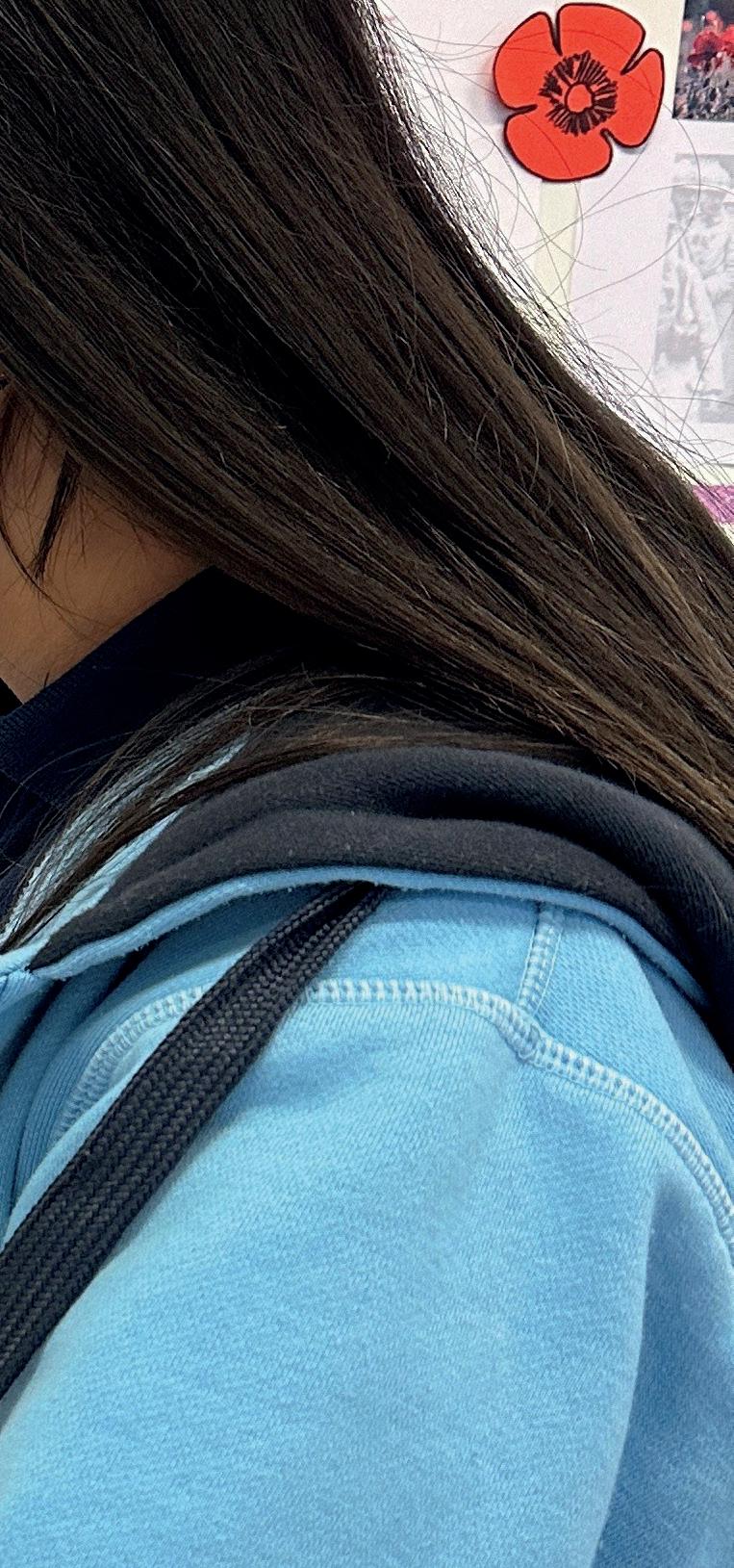
A central issue for me was the language of delivery in my support sessions. The SSST supervisor cannot possibly become fluent in the literature of several new languages, and yet teaching a non-English course in English results in a double cognitive load for students: translating and executing each task. My school has consulted with bilingualism specialist Eowyn Crisfield for the past three years on embedding home languages into lessons. Crisfield emphasises the need for students to work in their own languages as much as possible in order to lower the cognitive load, but she advises that for the SSST programme, skills and literary devices can be taught in English and transferred to the target language. Importantly, the resources may be in English; most students take their Group 3-6 subjects in English and the vocabulary is always helpful. Moreover, sharing these resources shows the self-taught students what their English A counterparts are doing, thereby providing equivalency and an idea of the work required.
I now begin my SSST classes with 10 minutes on the skill in focus that week, derived from the course aims and assessment objectives. This is necessarily conducted in English, but students must complete every task in their language, as seen in the example provided (headed ‘Assessment objective: Communicate’).
Assessment objective: Communicate
1. Skill: Vocabulary Building
• Look over the English word lists to get an idea of the tools that can help you to communicate your understanding of a text
• Then make or find vocabulary lists in your own language (or ask your tutor).
2. Task
• Select one paragraph from a Paper 1 essay you wrote last year and rewrite it using more sophisticated vocabulary, terminology and sentence construction. How can you make one sentence say more than one thing? How can you use a strong verb to convey your interpretation of the text?
The best way to improve your vocabulary is to practise using it. Dont just read it. Write it!
Spring 2023 | International School | 29 Leading, teaching and learning
While students are working on a task, I translate their work (using Google Translate) and give feedback. I may not be able to help them with their language and sentence construction, or the content of their setworks, but I can help them to address the assessment criteria. Even a poorly translated Point–Evidence–Analysis (PEA) paragraph will reveal if a student has discussed the use and effects of stylistic features, or if they have extended their analysis to consider audience and purpose. Just as I would with my DP English literature students, I can give immediate formative feedback during class. In the example provided, I reviewed the structure of a PEA paragraph with the class and set general questions. The screenshot (headed ‘PEA Paragraph’) shows one student’s online
workspace in Microsoft OneNote, in which she has translated my feedback into Japanese so that she can access it in the target language and apply it more effectively.
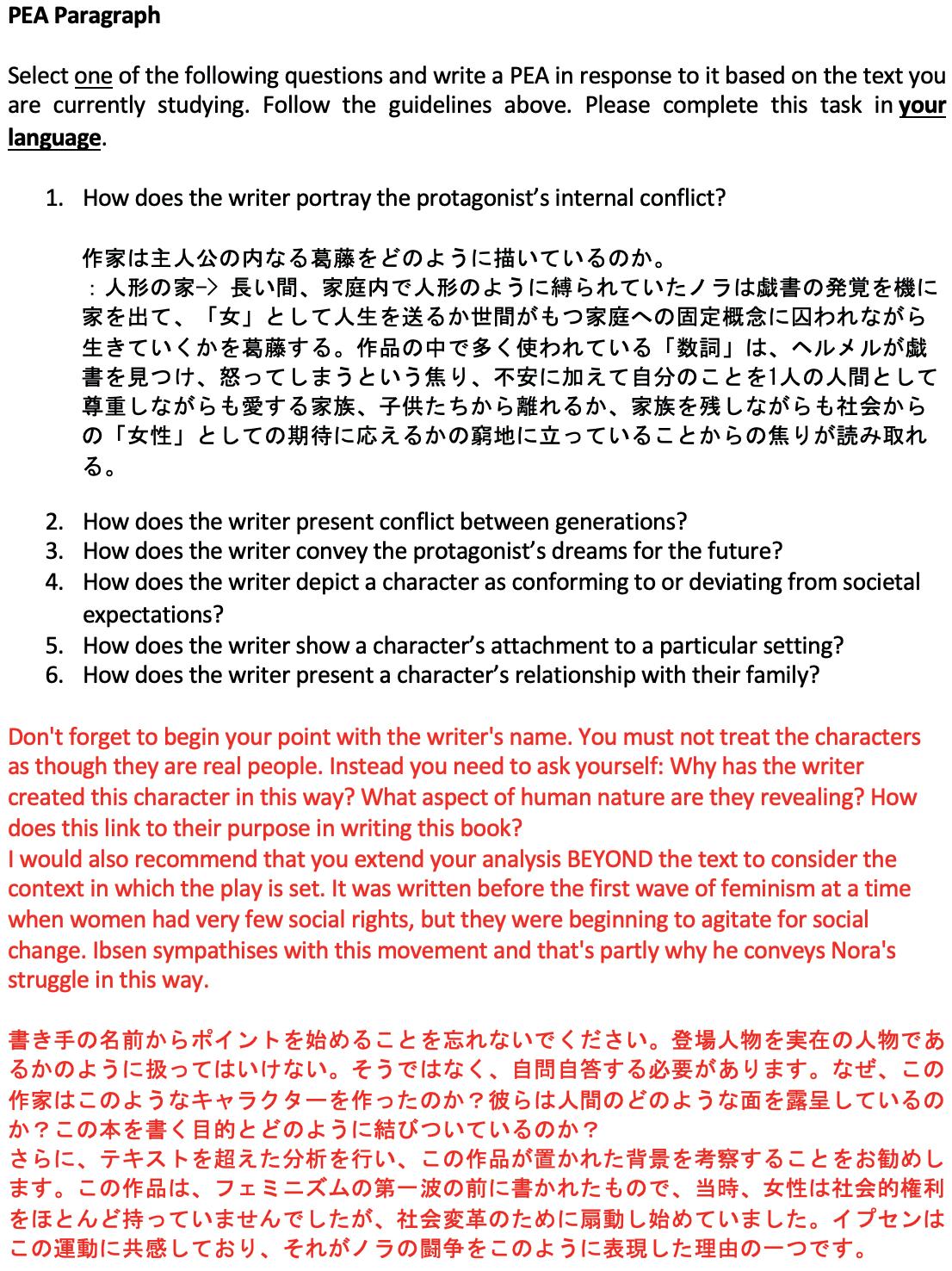
I also help with the ‘self-study’ and organisational skills necessary for the programme, as the students are expected ‘to autonomously administer the 150 hours required for the study of the course’ (IB, 2019). Each week, my students set and review weekly targets on their workspaces and show me evidence of their work. This helps them to keep their Group 1 subject on their radars and to feel accountable for their progress.
In following this skills-based approach, I have seen positive changes in attitude and achievement among our students. My school has adopted a strong translanguaging policy, and students are encouraged to draw on their home languages to learn in all subjects. There is room to grow, of course, particularly in developing a long-term SSST programme. Crisfield proposes building in a longitudinal self-taught programme from lower secondary, so that students can access structured home-language learning from their arrival in the school, not only at IBDP level. Even without language tutors, students would benefit from a timetabled lesson each week to build valuable skills in vocabulary, literary analysis, and conceptual and critical thinking in their home language. After all, encouraging students to speak and study literature in their own language cultivates confidence, creativity, respect, and a strong sense of self- and shared identity. ◆
Vanessa Walker is an IB Diploma English and Theory of Knowledge teacher, and SSST supervisor, at St George’s International School, Switzerland. ✉ vanessajwalker@gmail.com
References
• Alsup J & Biesiada B (2015) A Case for Teaching Literature in the Secondary School: Why Reading Fiction Matters in an Age of Scientific Objectivity and Standardization. London: Routledge.
• Crisfield E (2022) English and Home Languages: setting all students for success in Language A. Workshop, 24 August 2022.
• International Baccalaureate (2019) Language A: literature school-supported self-taught student guide. Cardiff: International Baccalaureate.
30 | International School | Spring 2023 Leading, teaching and learning
I have seen positive changes in attitude and achievement among our students.






















































































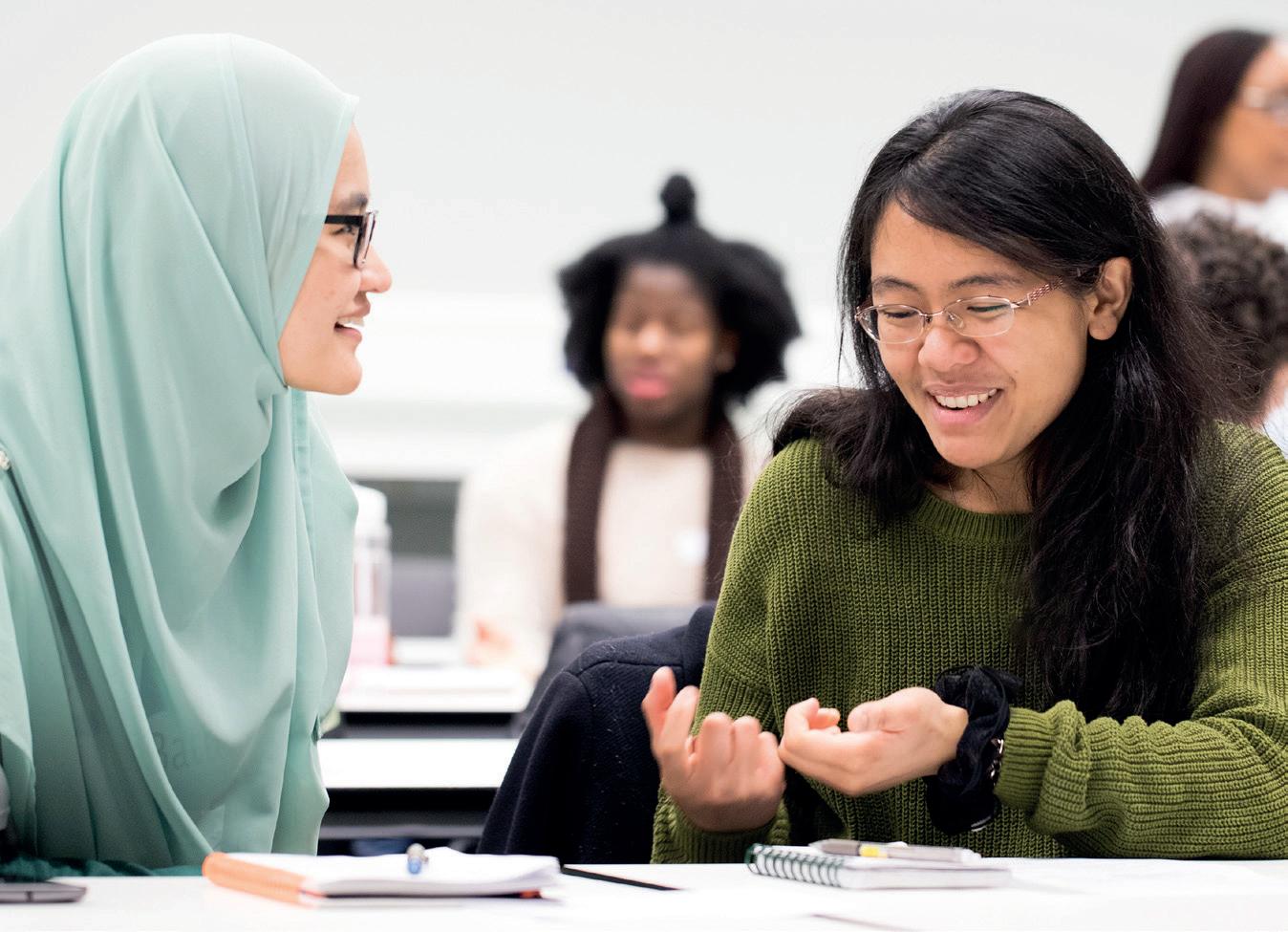
Spring 2023 | International School | 31 Leading, teaching and learning Sports Timing:: Indoor & External Pavilion T I School E P Clocks For the Swimming Pool / Sport & Leisure Centre For the Gym / Sports Hall www.sportclox.com sales@sportclox.com UK Manufactured Solar Powered Clocks For the Pavilion, Clubhouse, Pool POLO We supply Worldwide Taught by leading experts and delivered flexibly to work around your commitments. Explore our MA Eduction and Postgraduate Certificate in International Education (PGCiE) courses. Gain significant insight into the latest education trends and build up an extensive network to help take your career further. Study at Bath: MA Education and PGCiE go.bath.ac.uk/education-masters Scan QR code to find out more
How do we teach children about the World without scaring them?
By Rob Ford
One of the toughest challenges I have ever faced in my career is right now. How, as educators, do we present the World to our students without scaring them and conveying the impression that a grim dystopia awaits?

It is not enough simply to ‘present the World’ and its issues. The role of education is to allow the development of critical understanding and to impart our shared societal values.
Allowing students to voice their fears, to understand the World as it is in the 2020s, with complex existential issues all around the globe such as climate change, pandemics, nihilistic wars, deep inequalities and injustices, is a challenge; these are issues that adults find hard enough to comprehend in this tumultuous decade. But it is a challenge we must not be scared of or vacate the arena as educators to the populists and the extremists in our midst. Educators cannot be scared of education.
Our role in education is to show it doesn’t have to be this way, and that the World could and should be a better place. Education isn’t a passive process or outcome. We are not on the sidelines learning abstractly. We need to ensure that our students, as the next generation, have some degree of hope that there are solutions and resolutions to create a more sustainable, equal, just and peaceful future in a realistic, non-panglossian way. And we mustn’t forget also to teach them the beautiful human stories that exist and happen globally daily.
‘At present the ways we organize education across the world do not do enough to ensure just and peaceful
societies, a healthy planet, and shared progress that benefits all. In fact, some of our difficulties stem from how we educate. A new social contract for education needs to allow us to think differently about learning and the relationships between students, teachers,
also scares students in thinking about the future. There are extreme cases of US states banning books, and ‘critical race theory’ has become a very thorny legal issue for many school boards and individual parents, with a growing concern that US teachers and school leaders will end up leaving the system as these ‘culture wars’ continue (Turner, 2022). It seems odd that as Black History Month celebrations are an established feature of my schools in Moldova, more and more US schools are worried about even
knowledge, and the world’.
(UNESCO, 2023)
The perceived politicisation of education over the last decade in countries including the USA and UK, in an arena pervaded with artificial and lazy constructs, and terms such as ‘cancel culture’ and ‘woke’, has actually deterred many educators from even attempting to explain global events, often sticking to ‘teach them the facts only’ without any values attached to this approach or critical thinking and understanding to unpack complex issues or historical and political events.
In the USA, this has been associated with America’s complex and difficult history around slavery, segregation, diversity and equality. The political issue of Black Lives Matter and high profile deaths of black people, coupled with the populism and nationalism of the Trumpian era, not only scares teachers in determining how they proceed but
32 | International School | Spring 2023 Leading, teaching and learning
‘It is easier to build strong children than to repair broken men’. (Frederick Douglass)
One of the toughest challenges I have ever faced in my career is right now.
recognising such an important event as part of the school calendar.
In post-Brexit UK, the Prime Minister’s January 2023 announcement that students in England would study mathematics up to age 18 seemed to endorse the move away from schools ‘educating’ students about the World, and a policy approach in line with teaching basic skills being the purpose of schools. At some point, the false binary dichotomies prevalent in education for too long, be it ‘skills vs knowledge’ or ‘traditional vs progressive’ will disappear, but it seems we have some way to go yet – in the UK at least.


I have experienced such challenges throughout my career as a history and politics teacher, and as a school leader responsible for the moral, social and cultural values central to the development of all the students in my care into wellrounded, educated, intelligent, civic-
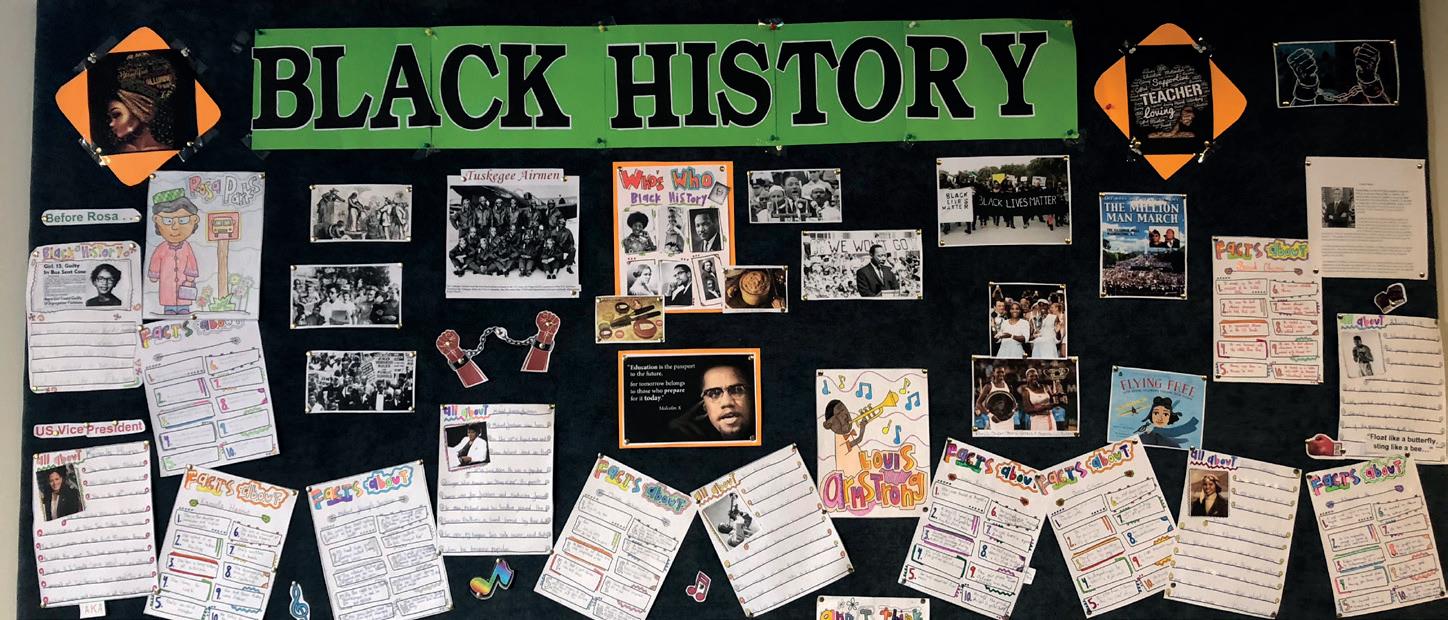
minded citizens and global citizens of the future. Teaching history in the UK city of Bristol, with its slavery legacy, was never an issue and we had brilliant engagement from community groups, local museums, the universities and the city council, in how we presented and taught local history. In Bristol last summer, standing by the empty plinth of Edward Colston (a 17th century slave trader whose statue was in 2020 toppled from the plinth and thrown into the harbour) and talking with my own children about their city’s history,
is part of that approach of educating, not scaring.
As a former Head of 6th Form, in my view it would be wiser for the UK government to ensure that all 16-19 year-olds develop not only career and work skills but also the ability to develop critical thinking, debating, dialogue in safe spaces and media literacy. The excuse of the ‘crowded curriculum’, often consisting in the context of England of just 3 A Levels, doesn’t wash when compared to the study programmes of 16-19 yearolds around the globe. Listening to good voices, informed ideas and views, and different opinions, through lectures and talks, but all within the framework of accepted democratic society: this is the open mindset we want all students to develop. As the Head of Wyedean School, the highlight of my week was the 6th Form critical thinking class in my room on a Thursday morning.
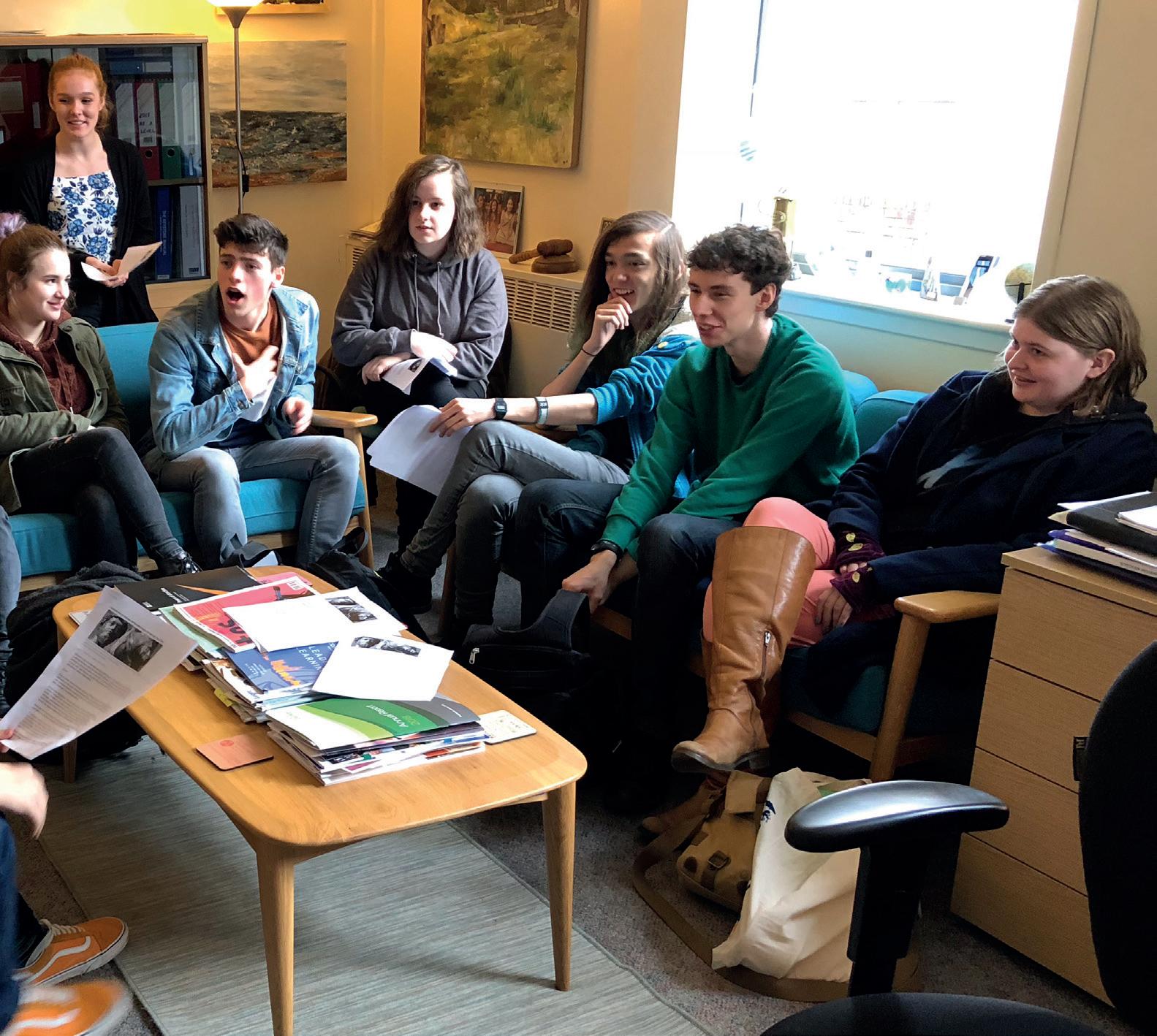
A set of guidelines that is worthy of a more detailed look are the UK’s guidelines on political impartiality in schools from 2022 that, while much derided, are actually very useful for all schools in helping shape the way they approach contentious and difficult topics or stories in the news. I have used some of these in developing a workable approach and policy for my schools in Moldova when it comes to approaching tough issues and events in a way that does not scare children. (Department for Education, 2022). The guidelines are a practical approach which is more useful than educators avoiding talking about the World for fear of scaring students. Educators need much more support and training here as well. I managed for years to teach Thatcherism in A Level Politics classes without once bringing in my own personal views from my father being a trade union leader and striking coal miner.
Moldova presented itself to me as a challenge as far as history and politics
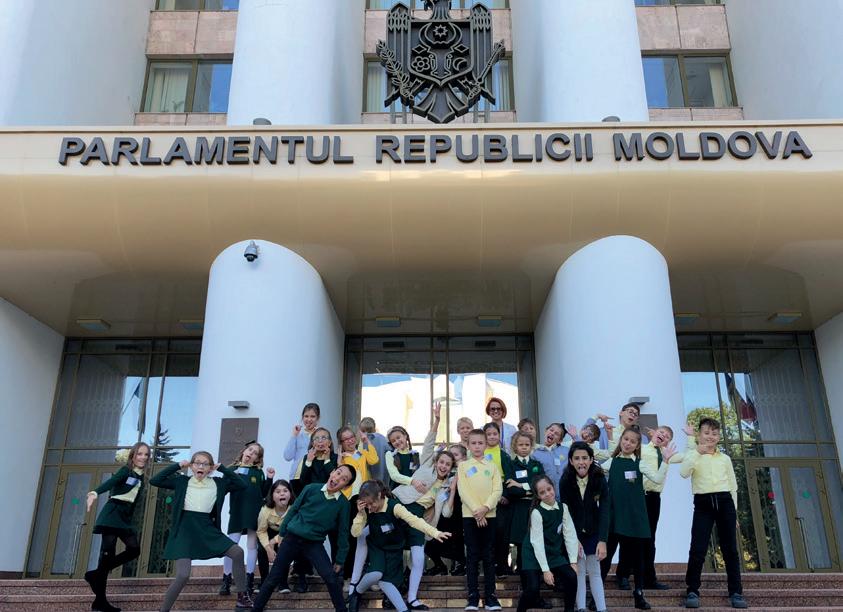
Spring 2023 | International School | 33 Leading, teaching and learning
Educators need much more support and training
Critical thinking group
Student visit to Moldova Parliament
were concerned: as a post-Soviet state, with a legacy of the Holocaust on its Jewish people, the immediate experience of many Moldovans in relation to the Soviet deportations, and the troubled and complex recent history with near neighbours Russia, Ukraine and Romania. A few years ago, I lectured a group of trainee history teachers in Tomsk State University, Siberia. I still remember the booing and cat calls I got from future teachers who didn’t like the way in which UK schools taught the USSR and Stalin. I have never forgotten just how deep this shared cultural context and contested history goes for some in this part of the world.
I am proud of the way we have developed at Heritage International School; our inclusion, our approach to diversity, celebrating all our humanity in
References
our schools of over 25 nationalities. Doing nothing in Moldova is not an option. Education banishes fear and ignorance. I am very proud of the way we have developed and taught critical thinking (Kharbach, 2023) and debating skills, approached in a practical, age-appropriate way issues such as climate change (Heritage International School, 2022a) and sustainable development, and brought the World into all classrooms daily with speakers in our Founders’ Lecture series (Heritage International School, 2022b) and partnerships with many countries. Our students take part in international COBIS (Council of British International
Schools) debating tournaments, are active members of GSA international student councils, and have worked in supporting the many refugees from Ukraine in the country. In 2023 we all still fear Russia’s war.
In the last year we have dealt with the war on Ukraine and the impact on many in our community who had Ukrainian and Russian families. When we mourned the victims of Bucha in May 2022, following the national day of mourning in Moldova, our teachers and students found this much more useful and reflective than painting young children’s faces in blue and yellow. Teaching students badly, with a morally relative approach or randomly about complex issues, isn’t the right approach here either. Often more damage is done this way, with students being either scared or de-sensitised to complex events and issues. An example here is the way that history departments in many schools don’t want the Holocaust taught as a historical event through the reading of the ‘The boy in the striped pyjamas’.
The mission of the Heritage International School’s founders is to prepare students confidently for the challenges of the future, not to hide them away from it or to make them scared and despondent about the future of the World. This is my lodestar as a school leader as I continue to navigate the uncharted and difficult waters of the 2020s, ensuring all our students face the future not fearful, but educated, confident and prepared for their World and how to change it for the better. In 2023, more than ever we need strong children and fewer broken adults. ◆
Rob Ford is CEO and Director of Heritage International School in Chişinău, Moldova, a long-time British Council Schools’ Ambassador, and previously Principal of Wyedean School, Gloucestershire, UK.
✉ robert.ford@heritage.md
• Department for Education (2022) Political Impartiality in Schools. https://www.gov.uk/government/publications/political-impartiality-in-schools
• Heritage International School (2022a) Millions of Teachers and Students Worldwide Take Climate Action Together. https://www.heritage.md/en/news/millions-of-teachersand-students-worldwide-take-climate-action-together

• Heritage International School (2022b) Captivating Topics and Remarkable Speakers in the Founder’s Lecture Series 2021-2022. https://www.heritage.md/en/news/ captivating-topics-and-remarkable-speakers-in-the-founders-lecture-series-2021-2022
• Kharbach M (2023) Why is Critical Thinking Important? 10 Great TED Ed Lessons. https://www.educatorstechnology.com/2016/05/top-ted-ed-lessons-on-critical-thinking. html
• Turner C (2022) School principals say culture wars made last year ‘rough as hell’. https://www.npr.org/2022/12/01/1139685828/schools-democracy-misinformation-purplestate
• UNESCO (2021) Reimagining our futures together: a new social contract for education. https://unesdoc.unesco.org/ark:/48223/pf0000379707
34 | International School | Spring 2023 Leading, teaching and learning
Doing nothing in Moldova is not an option.
Founders Lecture on SDGs
THE HOME OF INDEPENDENT AND INTERNATIONAL SCHOOL JOBS AND CAREERS
Recruit the best teaching talent with us

ONLINE INDEPENDENT AND INTERNATIONAL JOB BOARD







STANDARD LISTING

45,000+ independent & international professionals
15,000 social media reach accross six channels
Included in weekly jobs newsletter
FEATURED
Standard listing PLUS




























































Featured listing at the top of the Careers Section



















































































Advertising alongside relevant content throughout the site


ATTRACT THE BEST STAFF WITH THE LEADING DIGITAL PLATFORM FOR INDEPENDENT AND INTERNATIONAL SCHOOL PROFESSIONALS WORLDWIDE

School Management Plus is the leading print, digital and social content platform, for leaders, educators and professionals within the independent and international education sector worldwide.









Our readership spans every stakeholder within fee paying education worldwide from Heads, Governors, Bursars, Admissions, Marketing, Development, Fundraising and Educators – to catering, facilities and sports. Our jobs & careers center is the natural meeting point for those already in the sector, aspiring to join it, or hiring from within it.
office@schoolmanagementplus.com
PREMIUM



Featured listing PLUS Free listing if the vacancy is not filled
Included on magazine digital distribution to 150,000 readers
Included in school directory












































































Listing experience hosted on Kampus24
UNLIMITED

Premium listing PLUS Unlimited job listings throughout the year to our audience
Newsletter presence every month for your school


Exposure and features on your school in main careers section
Print adverts for your listings each term
Listing experience hosted on Kampus24











The rst 100 schools to sign up will receive 20% o a year’s unlimited package
• Social following of 15k across 6 channels





















• 60% annual growth in web tra c



















• Core readership of Heads, Senior Leaders, Heads of Department, Bursars and Finance managers, Marketing and Admissions, and Development across the sector

Spring 2023 | International School 35 Leading, teaching and learning MANAGEMENT SCHOOL
plus
WWW.SCHOOLMANAGEMENTPLUS.COM/RECRUITMENT
POPULAR
POPULAR
Challenges in International Assessment






 By Louise Badham
By Louise Badham
The International Baccalaureate (IB) offers educational programmes to students in more than 5,000 schools in over 150 different countries around the world. The rich diversity of the schools and students experiencing an IB education – through the Primary Years, Middle Years, Diploma and Career-related programmes – is one of the greatest strengths and joys of the organisation. In the Diploma Programme, the largest of the IB programmes, there were 188 different first languages and 212 first nationalities (IB, 2022) represented amongst the student cohort who took their final exams in May 2022. This extraordinary representation of languages and cultures from around the globe is something of which the IB is immensely proud – and is a tangible example of the IB’s mission of international-mindedness in practice.


Yet, when it comes to offering formal assessments, this wonderful diversity also presents the organisation with a unique set of challenges. It raises important questions, such as How do we ensure that students taking exams in different languages face the same level of challenge? How do we write exam questions that are culturally representative and inclusive for students all around the world? How do we translate markschemes consistently if key terms like ‘adequate’ and ‘good’ mean different things in different languages? How do we guarantee that final grades reflect equivalent levels of attainment – regardless of the language in which the exams were taken? With formal, summative assessments playing such a central role in students’ lives – and determining the next step in their academic or professional lives – these difficult questions need to be asked. The answers are often complicated

and messy – but then, the most interesting and important questions usually are.


And so, the IB’s assessment staff are continuously wrestling with these thorny questions and exploring how the IB can make assessment practices as fair, valid, reliable – and as linguistically and culturally inclusive – as possible. Recent studies in the assessment research team, for example, have looked into whether exam questions in the Diploma Programme’s Biology, Physics and Chemistry courses are ‘lost in translation’ (McGrane et al, 2021)– that is, whether the level of demand changes when translated into other languages. In another study, student work is being translated between six different languages to investigate whether word limits in coursework impact students’ performance in languages that are more ‘word hungry’ than others.
We’ve also investigated whether traditional approaches to assessment – where examiners review a student’s piece of work and assign it a mark – are always the most suitable when we need to compare student work produced in different languages. Instead of Englishspeaking examiners marking work in English and Spanishspeaking examiners marking work in Spanish, before the final marks are compared …. would it be possible for bilingual examiners to assess work from both languages at the same time? The short answer is, yes, they can! To an extent. And … it’s complicated and messy.
We asked experienced examiners from the Diploma Programme’s Language A: Literature to use a method
Leading, teaching and learning | International School | Spring 2023
known as ‘comparative judgement’ to review pairs of literary essays from a previous exam session (Badham & Furlong, 2022). Instead of assigning marks, each examiner reviewed around 100 pairs of essays and, in each case, simply made a decision about which essay was ‘better’. The results from multiple decisions were used to rank order the responses and calculate final results. It is notoriously difficult for examiners to come to a common agreement on subjective essay-based responses such as those needed to test skills of literary analysis. So comparative judgement can be a really useful way to get around this – not least because every response needs to be seen multiple times by different examiners to make sure that the final decision is sufficiently reliable.
The next question was whether this approach could work when bilingual examiners were asked to compare work written in different languages. Our Language A: Literature examiners were therefore asked to review pairs of essays in English, pairs of essays in Spanish –and pairs of essays where one was in English and the other in Spanish. Information from over 4,000 examiner judgements was used to rank order the student responses, from strongest to weakest – both within each language, and across languages. Finally, we asked examiners for feedback on how well they believed this whole process worked.
Interestingly, when considering only the numbers, using comparative judgement bilingually across languages seemed pretty successful! Overall, the examiners generally agreed with each other about which essays were stronger and which were weaker. There were some slight indications that the bilingual judgements were a little less reliable but, on the whole, the method seemed to work. We could, in theory, have generated a mark for each student’s piece of work from the bilingual comparisons that, from a statistical point of view, would be considered a ‘reliable’ result.
But – the examiners’ feedback showed it was not quite so simple. Whilst they found the potential crosslanguage standardisation benefits to be an advantage, there were also many challenges. Most found making bilingual judgements more difficult than traditional marking, as thinking in two languages at once was intellectually demanding. And, on a large scale, the method would require numerous examiners with very high levels of bilingualism – which would be a huge challenge in terms
of recruitment – not to mention the need to find a way to measure and check examiners’ linguistic proficiency in both languages, which would be necessary to ensure that all examiners could access and understand student responses equally in both languages.
Examiners also found intriguing academic differences in the way students from each language wrote their essays. There were differences in style, and in the ways in which students structured their essays in English A: Literature compared to in Spanish A: Literature. They also noticed that Spanish A: Literature students tended to take a more contextual approach – for example, commenting on how aspects such as authors’ biographical details might have influenced the writing of the texts – whereas English A: Literature students seemed more likely to analyse texts from a more technical point of view, such as focusing more on formal literary devices.
All of this raises a number of interesting questions: What are the most appropriate ways to compare results from different language versions of IB assessments? How do we design assessments that allow for culturally different approaches to the same subject? How can we gather meaningful evidence on how academic skills are represented and understood in different linguistic and cultural groups? When should different language versions be considered variants within one academic subject – and when are they separate subjects in their own right? The answers, of course, will be complicated and messy. But only by continuing to ask and investigate these complex questions can we strive to offer the fairest and most valid assessments to our linguistically and culturally diverse IB community. ◆
Louise Badham is a Manager for Assessment Research & Design at the International Baccalaureate, and is carrying out doctoral research into issues in international assessment at the University of Oxford.
✉ assessment.research@ibo.org
References



• IB (2022) The IB Diploma Programme and Career-Related Programme








Final Statistical Bulletin: May 2022 Assessment Session. Cardiff: International Baccalaureate. Available at: https://ibo.org/globalassets/new-structure/about-theib/pdfs/final-statistical-bulletin-dp-cp-may-2022.pdf
• McGrane J, Kayton H, Double K, Woore R & El Masri Y (2021). Is Science Lost in Translation? Language Effects in the International Baccalaureate Diploma Programme Science Assessments. Final Report. Oxford University Centre for Educational Assessment (OUCEA). Available at: https://ibo.org/research/ assessment-research/research-studies/is-science-lost-in-translation-languageeffects-in-the-dp-science-assessments/

International School Leading, teaching and learning | | 37
Rethinking Learning and Learning Spaces after the Pandemic
By Tasneem Khan
Iam a primary teacher at an International Baccalaureate (IB) school in India, and while I have always loved my job, the years of teaching during the pandemic became a profoundly life-affirming experience for me. For more than 2 years we worked against a backdrop of fear,
uncertainty and anxiety. Colleagues and students fell sick and neighbors contracted COVID. We were frequently isolated as much of the rest of the world was, and during the second wave in India, we were beset with an ever-present sense of loss and grief. And yet, through all
38 | International School | Spring 2023
of this, my work life was pulsating with creative energy and a heightened sense of care and bonding. For many of my colleagues and myself, teaching in the pandemic years sparked a furious bout of learning and growth. Our entire world, professionally speaking, flipped on its head overnight. We came home one Friday, with talk about school being closed for a week or two, began our online classes on the Monday, and returned to school only 2 years later. Despite the upheaval, the fact that we had other people – in this case, children – depending on us to show up and do our bit meant that that’s exactly what we did, every single day. Much of our routine life had come to a complete standstill, but I found that the days were tumbling into each other frantically as the planning and the teaching and the reflection and the learning never stopped. In fact, it underwent a transformation, as everything from lesson objectives to pedagogy to classroom management had to be reinvented and reimagined. Up-skilling took on a whole new meaning, with all of us collaborating closely with peers – both from our school and from a vast set of networks created on-the-go – to acquire the new set of skills and competencies that teaching online
required, all on a super-fast track.
It would be easy to be quite cynical about the education ‘industry’ as a whole, with its commercial underpinnings and market-driven ideology, but somehow, this period became infused with urgency, curiosity, courage and fun: all the things we know and recognise as being important! And all the values that we had hoped to subscribe to and align ourselves to – especially when we first became teachers. In India, we spent several weeks in extended periods of lockdown. I was acutely aware that many of my students were socially isolated, and my log-in at 8:30 am was not just a log-in but a lifeline that was helping many to stay afloat. I spent many hours thinking long and hard about how my online classroom could ensure every child had access to the tribe and the fire that the poets have reminded us is so vital. Being relevant and interesting and present for a bunch of 9 year-olds on the other side of a screen was challenging, but I’m beyond grateful for it because I can’t think of anything that would have been more effective in providing purpose and meaning during those confusing times. And that does make me wonder about who was throwing whom a lifeline.
The reflection in this article is not about congratulating teachers for their hard work, or trying to entice people into the profession. Rather, it is about seeing and living the benefits of being a community. In the pre-pandemic world schools already existed as communities, far from perfect of course, but still representing a collective effort and a collective life built on the back of systems, routines, rhythms and rituals. Those of us who were attached to schools therefore survived that period relatively intact, simply because the sense of community, and belongingness and responsibility to the community, were so ingrained. And so, for me, if there is a learning here, it is the realisation that the ‘I’ is nowhere near as critical and necessary as we imagine it to be. I believe it’s time that we champion and honour and glorify community. In the years ahead, it’s the ‘We’ and the ‘Us’ that we desperately need to discover and nurture. For me, the pandemic has underscored the importance of community. I hope that those of us who are involved in the business of designing educational spaces, and fashioning learning engagements and pathways for the next generation, understand and internalise this deeply, so that the schools of tomorrow are reflective of and responsive to this most basic of human needs. ◆
Spring 2023 | International School | 39
Tasneem Khan is an IB Primary Years Programme teacher in India. ✉ kh_tasneem@gmail.com
From the Schools
For me, the pandemic has underscored the importance of community.
British and International?
In today’s changing world, it is more possible than ever for schools to be both
 By Claire Russell
By Claire Russell
Living overseas and being part of an international school community brings with it unique privileges and perspectives for teachers and students alike. We are lucky to experience and learn about the cultural values and traditions of our host nations and, at the same time, encounter on a daily basis the cultural diversity of the families who make up our school communities. Embracing, understanding, and celebrating this diversity is a huge part of what international schools stand for, and I would assume a consensus amongst the international teaching community in line with the International Baccalaureate’s Mission Statement, as we strive to

‘encourage students across the world to become active, compassionate and lifelong learners who understand that other people, with their differences, can also be right’. These ideals of empathy, equity and open mindedness are what I believe to lie at the heart of international mindedness and, without question, what should lie at the heart of any international school’s core values.
However, the unique histories of many international schools means that even within the labels attached to these schools, there lies a seemingly rather jarring paradox. My own school, Tanglin Trust School, situated in Singapore, is a British International school, which surely raises
From the Schools
the question of how a school goes about being both British and International at the same time. Because of this dual identity, and because we offer the International Baccalaureate (IB) Diploma Programme (DP) alongside A Levels to our sixth form students, we are inspected by two regulatory bodies: British Schools Overseas (BSO), and the IB. We are therefore required to prove not only that we foster ‘British Values’, but also that we develop ‘internationally minded people’ in line with the IB’s Learner Profile. At first glance this may seem challenging, but in this article I hope to explore how the two identities are, in fact, not as dichotomous as they may initially appear and how, as a school, we strive to strike the right balance and ensure that both aspects of our identity serve the school community fully.
Our school website states that the school was founded in 1925 ‘to provide high quality British education to children of expatriate families’. As we approach our centenary celebrations, while the school serves a much more culturally diverse community than it did back in 1925, with approximately 50 different nationalities on roll, the ‘Britishness’ of what we provide is still a draw for many families, and is something we hold dear as part of the school’s unique history and identity. So,


how do we preserve our school’s heritage whilst simultaneously valuing and giving equal status to the many perspectives held by our school’s stakeholders?
The answer, I believe, is through Tanglin’s Core Values, which are well known by students, staff and parents: Respect, Responsibility, and Purpose. As a leader in our school, I know that these are more than mere wall display and are lived values which are central to our pastoral and academic direction. The value of respect is defined further in the school literature as ‘a community where everyone is valued and included’, whilst responsibility is said to include members of the school who ‘seek to act ethically and according to the principles of social and environmental responsibility’, and purpose includes ‘students’ personal fulfilment, achievement, and success in all that they do, in and out of school’. It is clear that our school’s philosophical starting point is one where equality, social justice, and diversity are central to our lived experience as a school; some of the very things that the IB say define international mindedness, but crucially, are also echoed in BSO’s definition of 'the fundamental British values of democracy, the rule of law, individual liberty, and mutual respect for, and tolerance of, those with different faiths and beliefs'. It is important to acknowledge
that whilst our school has changed in the last century, so too has British society, and the emphasis here on different faiths and beliefs reflects the growing multiculturalism and racial diversity of Britain itself. What it means to be British today is not rooted in white colonial history, but has emerged into a much more ethnically and culturally diverse definition too. Perhaps, then, the two seemingly opposing identities of ‘British’ and ‘International’ are not so far apart, and common ground does exist to serve as a starting point for schools to forge a uniquely British International identity.
But how do we make sure that these values are more than words on a website or in a glossy brochure? One answer is through our CAS (Creativity, Activity, Service) programme in the Sixth Form. Whilst CAS is a curriculum requirement only of the IB Diploma, our school made the decision back in 2009 that all sixth formers should fulfil the CAS requirements set out by the IB, regardless of whether they are following an IB Diploma or an A Level pathway, because as a school we believe there is intrinsic value for all our students in what CAS stands for. The IB CAS Guide says that participating in the three strands should encourage ‘an exploration of issues of global significance’, alongside consideration
Spring 2023 | International School | 41
Perhaps, then, the two seemingly opposing identities of 'British' and 'International' are not so far apart
From the Schools
of ‘the contexts and views of others’. The guide also suggests that a CAS project should be connected to ‘an issue of global significance’, but be ‘explored from a local perspective’. Indeed, the list of local charities our school supports through its CAS programme is extensive, and I would argue that there is no better way for students to live our school’s core values of Respect, Responsibility and Purpose than through such projects.

Beyond CAS, another way in which we live our core values is through the academic curriculum. At Tanglin Trust School we have, over the last two years, worked very hard to create our own bespoke 3-14 curriculum. This was a real opportunity to move away from previous curriculum incarnations in these phases, which were much more closely modelled on the National Curriculum of England.
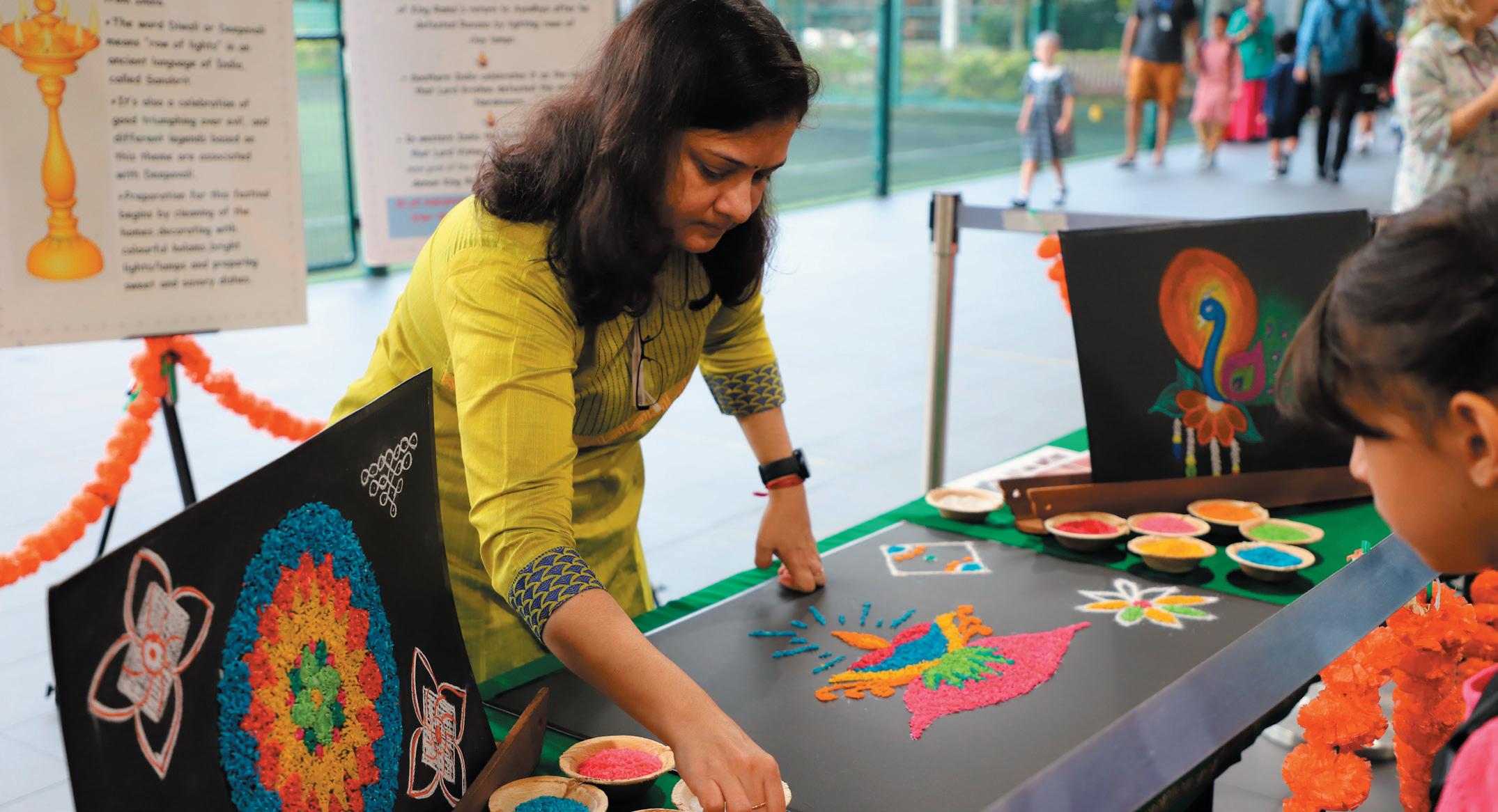
The new 3-14 curriculum gave us the chance to think about what suited our context best, and served all of our students best, bearing in mind the diversity of their cultural starting points. In English for example, our Years 7-9 texts now reflect a much wider range of cultures and traditions and, in Humanities, the scope for the study of cultures and societies from all around the world is vast. Creating a bespoke curriculum for our school in this way allowed teaching teams to offer students what Rudine Sims Bishop called ‘windows and mirrors’, where our young people are able to look through metaphorical windows into less familiar cultures and lives, while also seeing themselves reflected through ‘mirrors’ in the worlds they study. This can surely only lead to greater tolerance and understanding of difference.
In our co-curriculum programme too, students have opportunities to see the world through other eyes and to live our core values in their school life. Perhaps our Model United Nations (MUN) club is the best example of this, where students take on the roles of delegates from all over
the world, and are tasked with working towards solutions to global issues. MUN is a very popular co-curricular activity at our school, which is heartening evidence that many of our students buy into our core values beyond the classroom.
Of course, I can only write from my own experience, but it does appear that what at first glance appears to be a conflict of two separate identities is not such a contradiction after all. It seems to me that it is quite possible to keep the British heritage of a school like ours alive through traditional events such as the Summer Fete and the Christmas Fayre, through House names which recall the founding sites and grounds of the school, and through stories shared in assemblies about our British founder, Anne GriffithsJones. But in order to be true to our core values, and to develop internationally minded young people, we have to balance this with celebrations of Diwali, of Lunar New Year, of Hanukkah, and with many other events which reflect our community and those beyond it. We must ensure that we teach our students about the worldchanging achievements of non-British individuals and communities, and value these highly. This is something we must consciously and deliberately work towards, and it is possible. ◆
42 | International School | Spring 2023
Claire Russell is Senior School Deputy Head (Academic) at Tanglin Trust School Singapore ✉ claire.russell@tts.edu.sg
From the Schools
The Grafton chairs from Rosehill are perfect for use throughout your school or college. The range includes stacking chairs, task base chairs and stools, each with or without upholstered seats and in a large range of colours.

UK & INTERNATIONAL DELIVERY AVAILABLE
Rosehill also offer:
• Classroom chairs for all age groups

• Exam desks
• Classroom tables & science desks

• Cafeteria furniture
• Outdoor tables & benches
• Reception & soft seating
• Modular seating & sofas
Shop online at: www.rosehill.co.uk or call 0161 485 1717 to discuss your requirements

Independent Schools Magazine 11

Spring 2023 | International School | 43
From the Schools
New Paradigm Diversity, Equity and Inclusion Leadership

From the Associations
By Angela Browne
Diversity, Equity and Inclusion (DEI) work is not going away; it is set to become more deeply rooted than ever in organisational practice over the next decade.


• The projected global market for Diversity Equity Inclusion is estimated at US$ 9.3 billion in 2022 and will reach 15.4 billion by 2026.
• Overwhelming evidence that teams comprised of individuals with different and diverse identities will outperform across a range of dimensions is still the case.
• World events continue to spotlight the inequities faced by people who hold protected characteristics. Yes, the evidence for DEI is still strong, but progress is still slow. This could be because we believe investing in DEI is a zero-sum game. Assumptions that those who are currently ‘in’ (ie cis-white men) will be cast out, and others (minoritised groups) will be ‘in’ as a consequence of DEI efforts prevent progress but also miss the point. What if, as Patience Marime-Ball and Ruth Shaber (2022) put it, there isn't a ‘static or shrinking opportunity set’ or a ‘fixed economy pie’? At Being Luminary, we see the fundamental paradigm shift as one where everybody recognises that a commitment to DEI will bring about better social outcomes for ‘all’ and create a bigger pie for everyone to enjoy.
The 2021 UK census data provided some interesting headlines when it was published recently. For the first time, fewer than half the population described themselves as Christian, and the second highest group described themselves as being of ‘no religion’. The ethnic group ‘white’ declined from 86% in 2011 to 81.7% in 2021, and those describing themselves as Asian, Asian British, and Asian Welsh became the second largest group at 9.3% of the population. This was the first census to include questions on gender identity and sexual orientation. This in itself marked a change in inclusivity as it recognised the 1.5 million people (3.2% of the population) who answered the survey identifying as LGBT+ and the 262,000 respondents who said their gender identity was not the same as their sex assigned at birth. In England, 17.7% of the population identified as being disabled, and in Wales, the figure was 21.1% These census statistics around identity, read alongside hate crime statistics, raise some interesting questions. Diversity in the UK is increasing, yet our ability to ensure equality, inclusion and belonging is not. A recent Policy Exchange paper bears this out. It found that while neighbourhood segregation has been declining, as more ethnic groups spread out from the inner cities, the level of mixing between ethnic minorities and the Britishwhite majority is barely moving.
Brendan Cox, widower of Jo Cox, the UK MP murdered by extremists, is cited in the paper. He is now an activist and campaigner for more cohesive communities. He believes there are grounds for optimism because ‘the issue of integration and segregation has ceased to be an “us and them” issue, and has evolved into an “everyone” issue’ as more and more of the British population begin to recognise the disintegration of community and the associated loneliness this can lead to. In my view, the future of DEI work in the UK hinges on creating safe communities, creating belonging, developing cultural curiosity and ensuring inclusion for all: provocations for schools as microcosms of society should continue to mirror these themes.
Southeast Asia, meanwhile, is one of the most diverse regions in the world, with more than 100 ethnic groups and 655 million people speaking more than 1000 languages and dialects, yet only 58% of
companies in Southeast Asia have some form of DEI programme in place compared with a global average of 96%. But the workforce in this region is demanding change, with 90% of people from under-represented groups and 57% of all respondents (Krentz et al, 2020) saying that they would consider leaving their job for a more inclusive organisation. Estimates on the cost of that kind of workforce attrition run at 25 billion dollars a year. Southeast Asia's new paradigm is matching its domination of global economic growth with an acceleration of DEI efforts, ensuring that every
From the Associations
World events continue to spotlight the inequities faced by people who hold protected characteristics
organisation is positioned to tap the untold benefits of the region's diversity.
My question for schools is, what do your workforce composition and attrition rates currently say about your leadership and school culture? Do these aspects match your ambitions for global excellence, or do you need to catch up? In the USA, demographic change will mean embracing the realities and, quite frankly, the gifts of what is about to happen. In 2045, it is estimated that non-white populations will surpass the historically white majority. It will become impossible to continue with a white majority outstripping a non-white majority across all indicators. Thus the need to recognise the profound opportunities of the ‘growing economic pie’ becomes evident. Such large-scale demographic changes mean that the world's largest economy must adjust.
Let's look at what that means for schools. We will need to see growth not contraction, a more comprehensive curriculum, a profound commitment to developing a teaching workforce with a responsive approach to their cultural quotient, more representation across teaching and leadership, and different provision models to meet communities in new ways. In the USA, the future of DEI becomes designing for growth at scale and reimagining all previous ways of doing things with the optimism and excitement that everyone gets to benefit.
References
Across the EU, the Commissioner for Equality has an agenda combining many aspects of the global concerns articulated here. Helena Dalli believes that ‘diversity and inclusion foster cohesive communities and capitalise on innovation and growth’. This year the theme of EU Diversity Month is ‘Building Bridges’. It is an opportunity for organisations to commit to practical action at local, regional and national levels, building partnerships externally and building bridges between the different aspects of diversity internally through intersectional awareness in policy writing and provision planning. It is clear that the new paradigm leadership of DEI in Europe must accelerate from vision, values and mission statements to generous policies, practices and procedures that will be monitored along intersectional lines and evaluated for their impact on interrupting systemic inequity.

At the May 2023 COBIS Conference, I look forward to covering some of these new paradigm DEI leadership themes. In the meantime, I invite readers to consider how equipped your organisation is for the future of this work, a future where we believe the focus must be on:
• Building safe school communities, creating belonging, developing deep cultural curiosity and ensuring inclusion for people holding multiple and intersecting identities.
• Ensuring that every organisation has a diverse and stable workforce in place that mirrors the community around it and capitalises on the diversity advantage.
• Designing for provision growth at scale and reimagining all previous ways of doing things with the optimism and excitement that everyone benefits from these changes.
• Excelling in creating generous policies, practices and procedures that can be monitored along intersectional lines and evaluated for their impact on interrupting systemic inequity.
Our (free) Being Luminary Online Summit also takes place in May 2023 during EU Diversity Month. It will also be an opportunity to deepen this conversation on the new paradigm of DEI leadership. ◆
Angela Browne is a former education leader, director of Being Luminary: a diversity, equity and inclusion consultancy company, and founder of Being Luminary: an online space for luminaries. [www.angelabrowne.co.uk] ✉ info@angelabrowne.co.uk
• Krentz M, Vaughn E, Ruiz-Cabrero J, Jaafar M and Teo C (2020) The Diversity Dividend in South-East Asia. https://www.bcg.com/publications/2020/ diversity-dividend-in-southeast-asia
• Marime-Ball P and Shaber R (2022) The Impact of Diversity on the Global Economy | Impact Entrepreneur
• Policy Exchange (2022) White departure from inner city Britain halted. https://policyexchange.org.uk/?search=advanced&name=white+departure
46 | International School | Spring 2023
From the Associations




Spring 2023 | International School | 47 Exportable data analytics for school leadership & accreditations Ongoing support through dedicated Account Manager & Psychologist consultations Prioritised check-ins to enable student voice and timely interventions Customised regular and benchmark wellbeing surveys The school-wide wellbeing platform contact@komodowellbeing.com Komodowellbeing.com
Curious learner


All children have the natural desire to learn. It’s up to us—the educators— to help them realize their potential. At Cognia™, we partner with schools to build a holistic approach to continuous improvement that supports positive student outcomes. From accreditation and STEM certification to online differentiated professional development and a comprehensive suite of diagnostic tools—we are ready to support you.


Captivated botanist

cognia.org/membership


48 | International School | Spring 2023



















































 By Elisabeth Neiada
By Elisabeth Neiada


 By Lauren Binnington
By Lauren Binnington
























 Kim Cofino
Kim Cofino






























 By Jacobus Steyn
By Jacobus Steyn





 By Vanessa Walker
By Vanessa Walker



































































































































































































































 By Louise Badham
By Louise Badham













 By Claire Russell
By Claire Russell
























